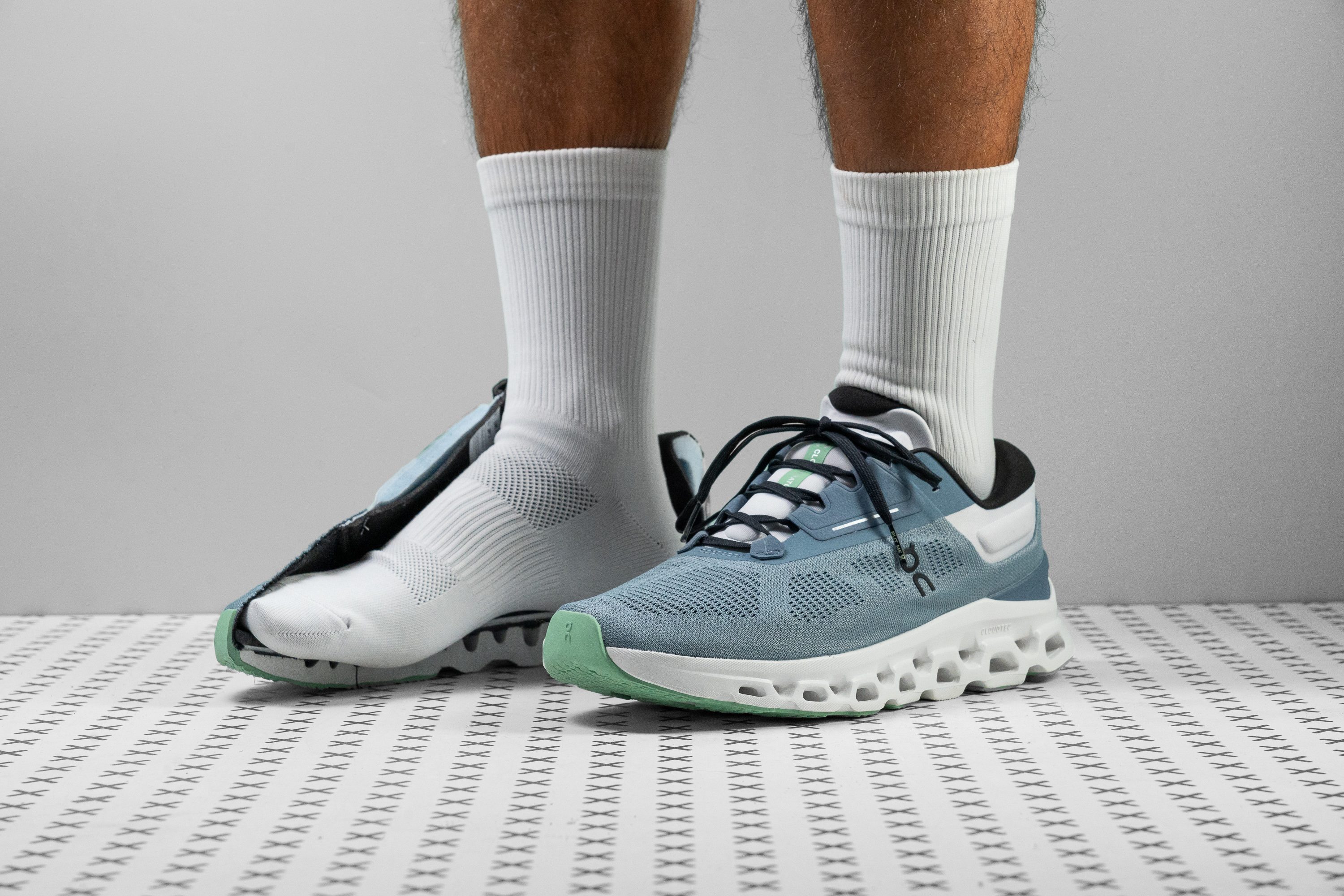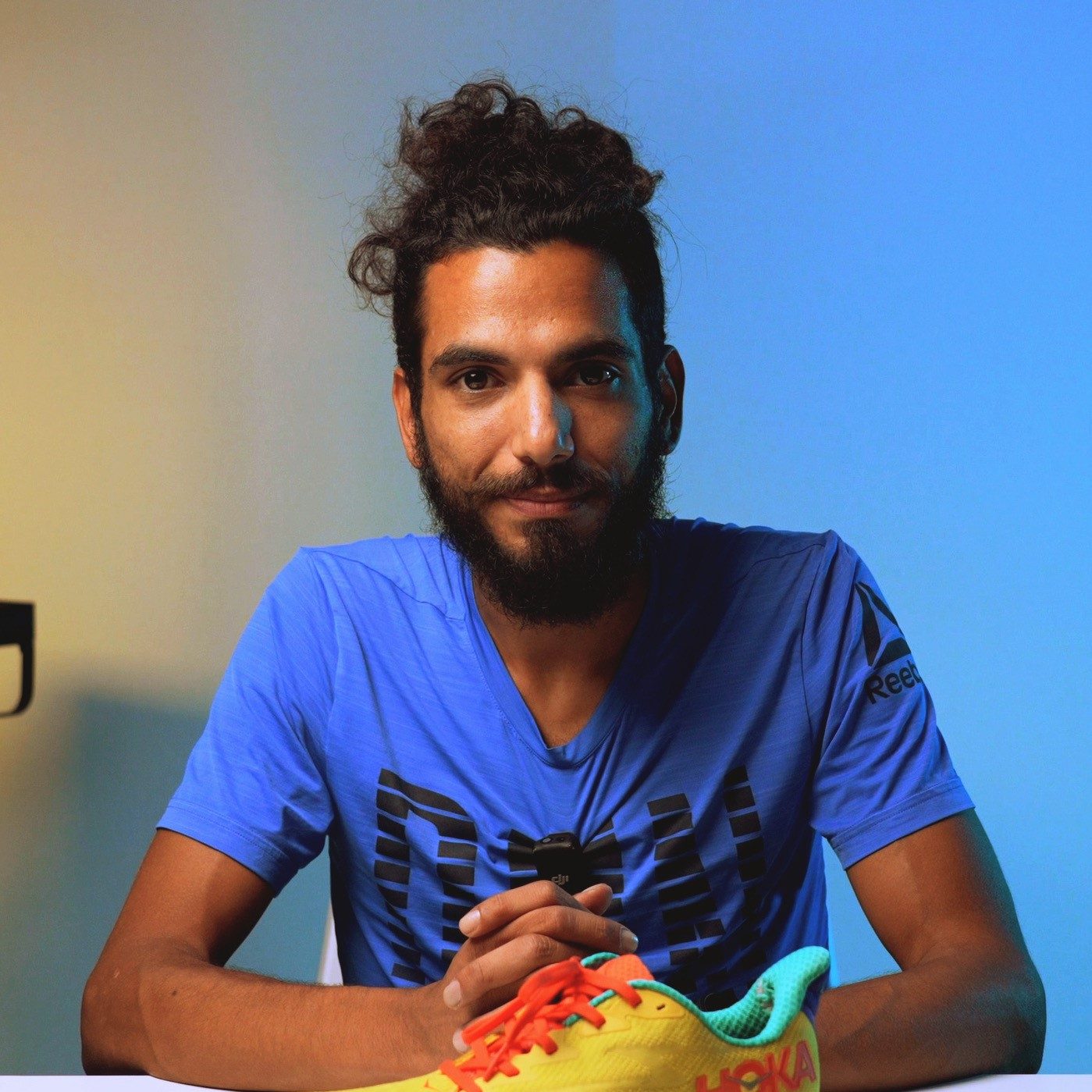Our verdict
Pros
- Propulsive nylon speedboard
- Smooth rolling ride
- Can go the distance
- Feels stable underfoot
- Secure and comfy lockdown
- Luxuriously padded tongue
- Roomy toebox
- Sleek and sustainably made upper
Cons
- Higher than advertised drop
- Stiff speedboard feels apparent at low speeds
- Pricey at $180
- Midsole voids catch debris
Audience verdict
- Top 21% in road running shoes
- Top 25% in On running shoes
Comparison
The most similar running shoes compared
+ + Add a shoe | |||||
|---|---|---|---|---|---|
| Audience score | 90 Superb! | 89 Great! | 90 Superb! | 90 Superb! | |
| Price | $180 | $160 | $180 | $160 | |
| Pace | Daily running | Daily running | Daily running | Daily runningTempo | |
| Shock absorption | Moderate | Moderate | High | Moderate | |
| Energy return | Moderate | High | Moderate | Moderate | |
| Traction | High | Moderate | High | Moderate | |
| Arch support | Neutral | Neutral | Neutral | Neutral | |
| Weight lab Weight brand | 10.4 oz / 296g 10.3 oz / 292g | 9.9 oz / 281g 10 oz / 284g | 9.6 oz / 272g 9.7 oz / 275g | 8.6 oz / 245g 9.2 oz / 260g | |
| Lightweight | ✗ | ✗ | ✗ | ✓ | |
| Drop lab Drop brand | 9.1 mm 6.0 mm | 8.9 mm 8.0 mm | 9.4 mm 6.0 mm | 7.9 mm 8.0 mm | |
| Strike pattern | HeelMid/forefoot | HeelMid/forefoot | HeelMid/forefoot | Mid/forefoot | |
| Size | True to size | True to size | True to size | True to size | |
| Midsole softness | Balanced | Balanced | Balanced | Balanced | |
| Difference in midsole softness in cold | Normal | Small | Small | Small | |
| Toebox durability | Decent | Decent | Decent | Decent | |
| Heel padding durability | Good | Bad | Bad | Decent | |
| Outsole durability | Good | Bad | Good | Good | |
| Breathability | Moderate | Moderate | Moderate | Moderate | |
| Width / fit | Wide | Medium | Medium | Medium | |
| Toebox width | Medium | Medium | Medium | Medium | |
| Stiffness | Stiff | Moderate | Stiff | Moderate | |
| Torsional rigidity | Stiff | Stiff | Stiff | Stiff | |
| Heel counter stiffness | Flexible | Stiff | Moderate | Flexible | |
| Rocker | ✗ | ✓ | ✓ | ✗ | |
| Heel lab Heel brand | 35.3 mm 37.0 mm | 36.1 mm 37.0 mm | 39.9 mm 37.0 mm | 36.1 mm 31.0 mm | |
| Forefoot lab Forefoot brand | 26.2 mm 31.0 mm | 27.2 mm 29.0 mm | 30.5 mm 31.0 mm | 28.2 mm 23.0 mm | |
| Widths available | Normal | Normal | Normal | Normal | |
| Orthotic friendly | ✓ | ✓ | ✓ | ✓ | |
| Season | All seasons | All seasons | All seasons | All seasons | |
| Removable insole | ✓ | ✓ | ✓ | ✓ | |
| Ranking | #71 Top 19% | #92 Top 25% | #40 Top 11% | #64 Top 18% | |
| Popularity | #172 Top 46% | #232 Bottom 38% | #203 Bottom 45% | #123 Top 33% |
Who should buy
We think the Cloudstratus 3 is a great choice for anyone that :
- Is looking for a well cushioned road shoe that can tackle most distances
- Prioritizes well padded, comfy, and breathable uppers in their daily trainers
- Has a slightly pronating stride but wants a neutral shoe that feels stable underfoot
- Wants a shoe that is versatile and stylish enough for runs as well as walks around town
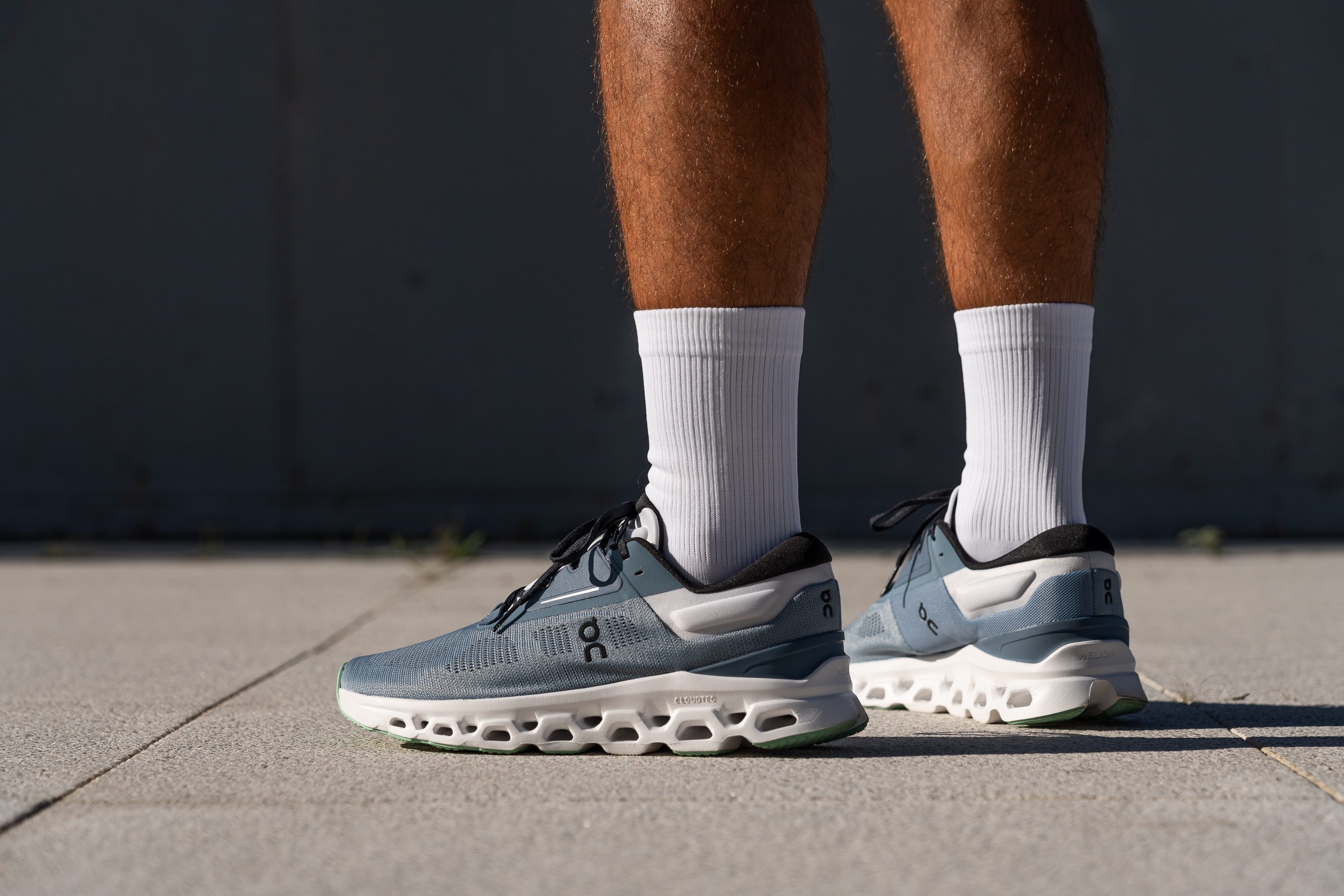
Who should NOT buy
The Cloudstratus 3 features a “speedboard” commonly found in On running shoes. While this does give this shoe some added responsiveness, we find it to be a bit of a misnomer as the Cloudstratus 3 isn’t a particularly speedy shoe and far from ideal as a tempo training partner. For a shoe with more pep in its step, we suggest the Saucony Endorphin Speed 3 or the even more race-ready, carbon-plated ASICS Metaspeed Edge+.
While advertised as sporting a mid drop of 6 mm, our accurate stack measurements reveal a higher drop of 9.1 mm. This makes the Cloudstratus 3 more conducive for heel strikers as it promotes protective landings and smooth transitions. Forefoot striking runners who prefer mid drop shoes should have a look at the ASICS Novablast 3 instead.
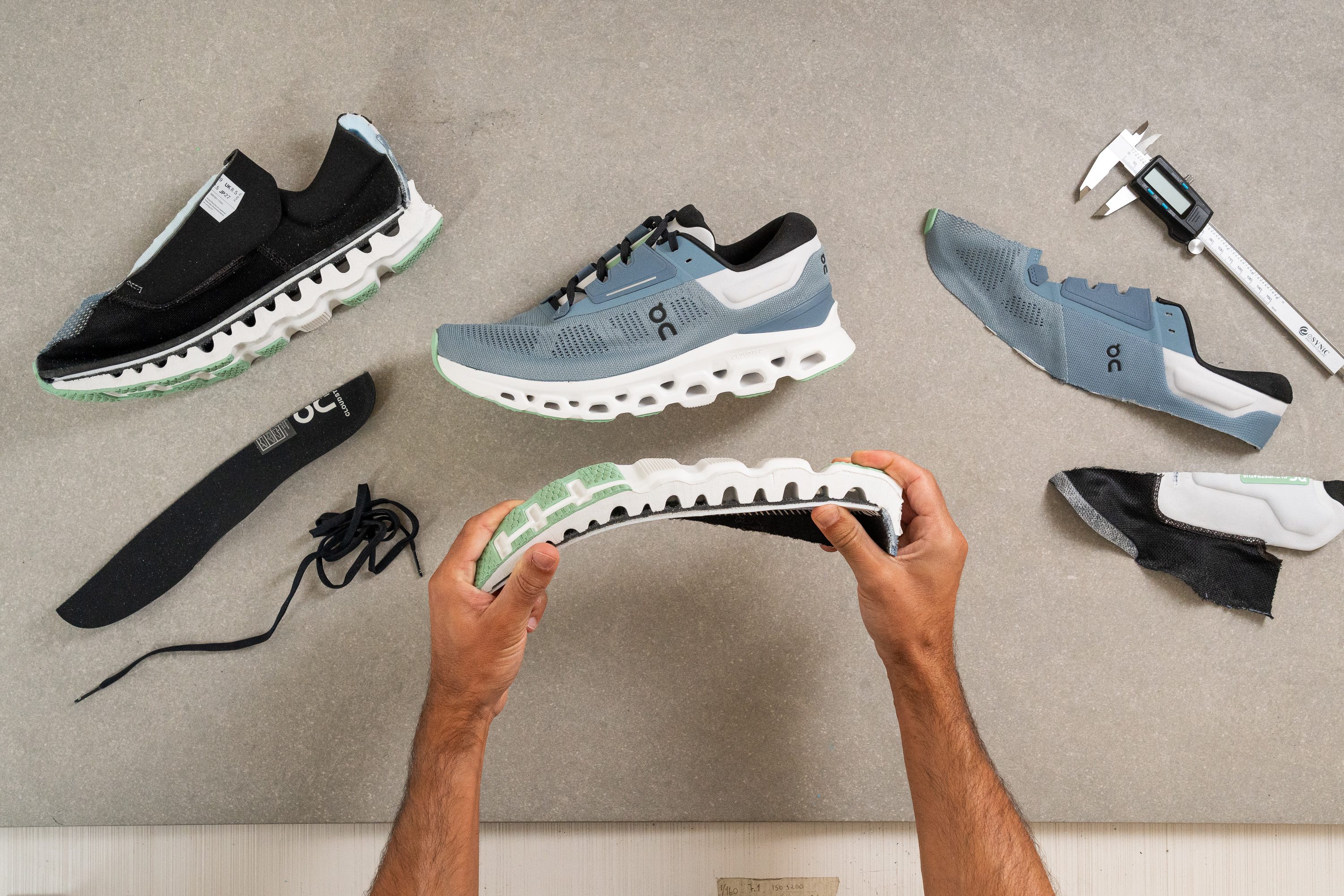
The $180 price tag puts the Cloudstratus 3 on par with more performance oriented shoes. For a daily trainer that won’t break the bank, we suggest having a look at the Brooks Revel 6 instead.
Cushioning
Shock absorption
The Cloudstratus 3 might let down runners expecting maxed-out shock absorption—especially at this high price. We measured just 123 SA in the heel and 95 SA in the forefoot, both falling below the average of our lab.
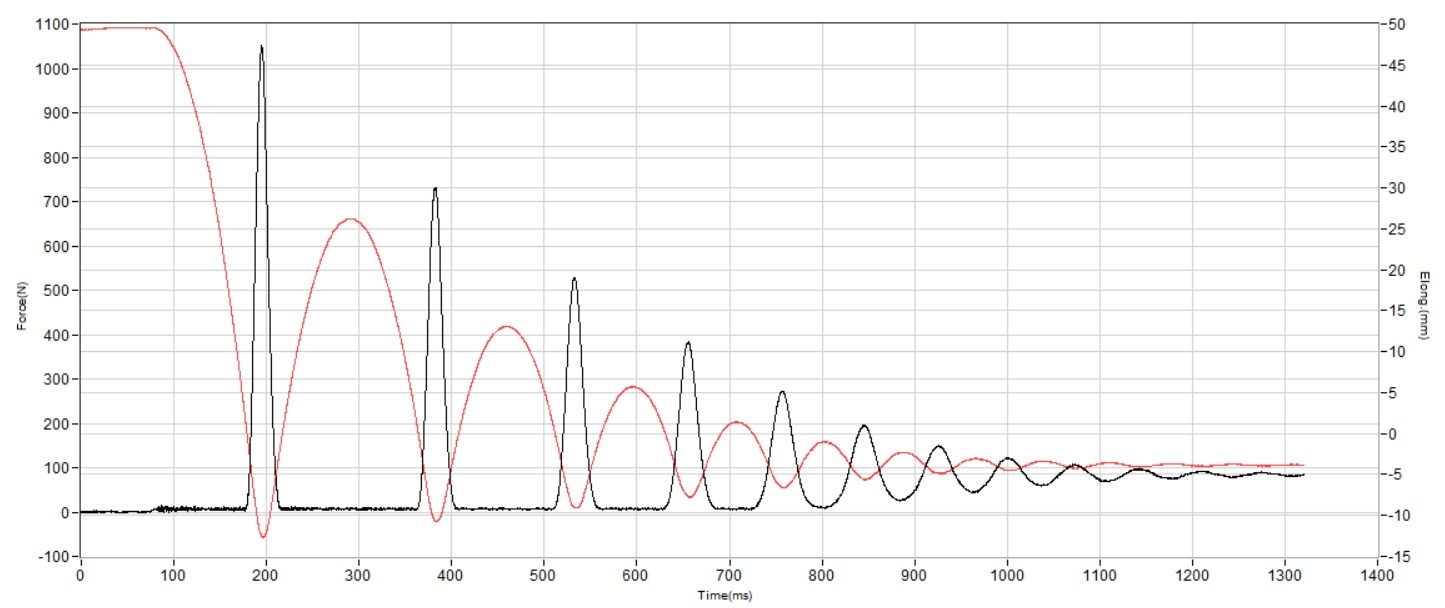
| Cloudstratus 3 | 123 SA |
| Average | 129 SA |
Energy return
Energy return is also underwhelming, and we believe On will have to win over runners with features beyond the midsole. We measured just 56.3% in the heel and 59.6% in the forefoot—nowhere near models like the Adidas Adizero EVO SL.
| Cloudstratus 3 | 56.3% |
| Average | 58.5% |
Heel stack
Using our caliper, we measured the Cloudstratus 3’s stack to be 35.3 mm high at the heel, which is 3.3 mm higher than the 32 mm stated by On. We do include the insole in our stack measurements, which might account for some of the disparity.
This is more foam underfoot at the heel than the average road shoe which helps to improve our sense of perceived cushioning. Therefore, despite the somewhat firm midsole, heel strikers will have plenty of foam underfoot to ensure a comfortable and well protected ride over any distance.

| Cloudstratus 3 | 35.3 mm |
| Average | 34.8 mm |
Forefoot stack
Moving to the forefoot, we found the Cloudstratus 3’s spec height of 26 mm to be much more accurate, with our caliper measurements turning up a forefoot stack of exactly 26.2 mm. This is slightly higher than our current lab average and means that forefoot strikers should also have plenty of foam underfoot to ensure effective impact dampening, even during long haul efforts.
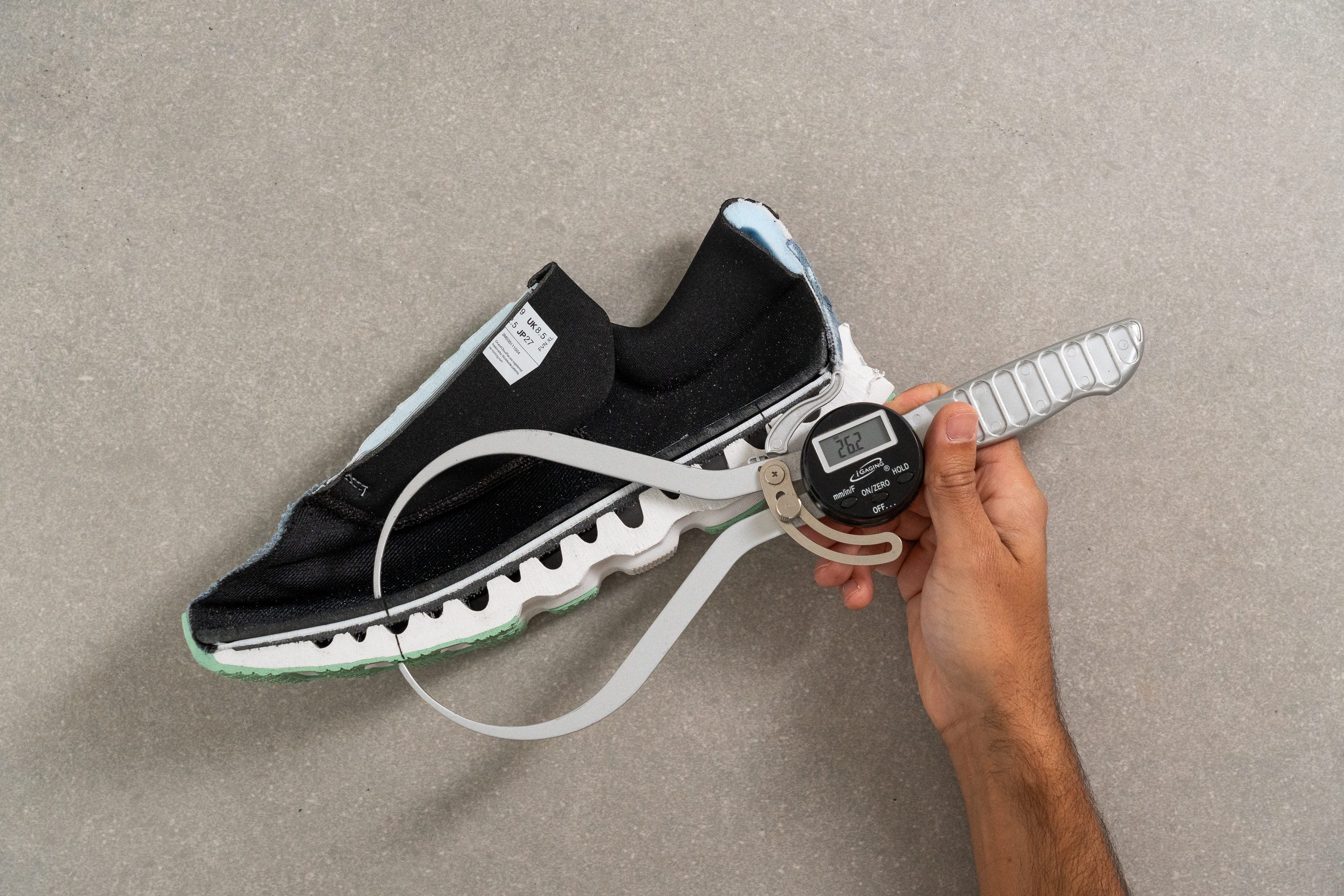
| Cloudstratus 3 | 26.2 mm |
| Average | 26.2 mm |
Drop
The difference in our stack measurements leaves the Cloudstratus 3 with a drop height of 9.1 mm. This is quite a bit steeper than the advertised heel drop of 6 mm, making the shoe fall in the category of high drop shoes as opposed to mid drop.
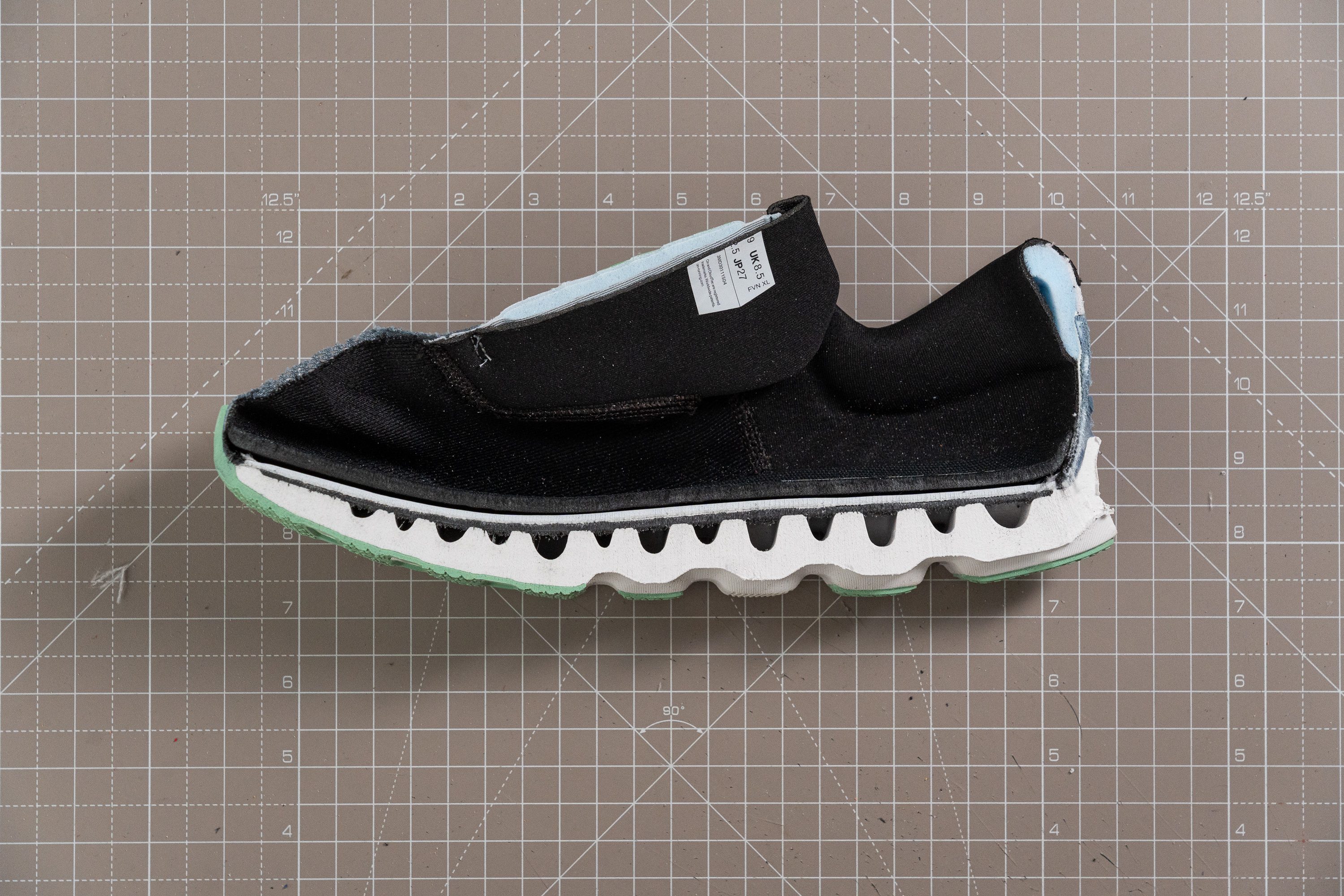
While this drop height is beneficial for beginners and runners with a tendency to heel strike, forefoot strikers accustomed to shoes with lower drops will want to consider the ASICS Novablast 3 instead.
This disparity in heel drop isn’t exclusive to On Running and is common enough among all manufacturers that we have an article exploring the matter using data we’ve compiled in the lab so far.
| Cloudstratus 3 | 9.1 mm |
| Average | 8.6 mm |
Midsole softness
Which brings us to the midsole. We pressed our durometer against the Cloudstratus 3’s Helion super foam and got a reading of 27.6 HA. While this result is firmer than average, the Cloudstratus 3 still provided us with a good level of cushioning and impact protection that kept us comfortable even during our longer test runs.
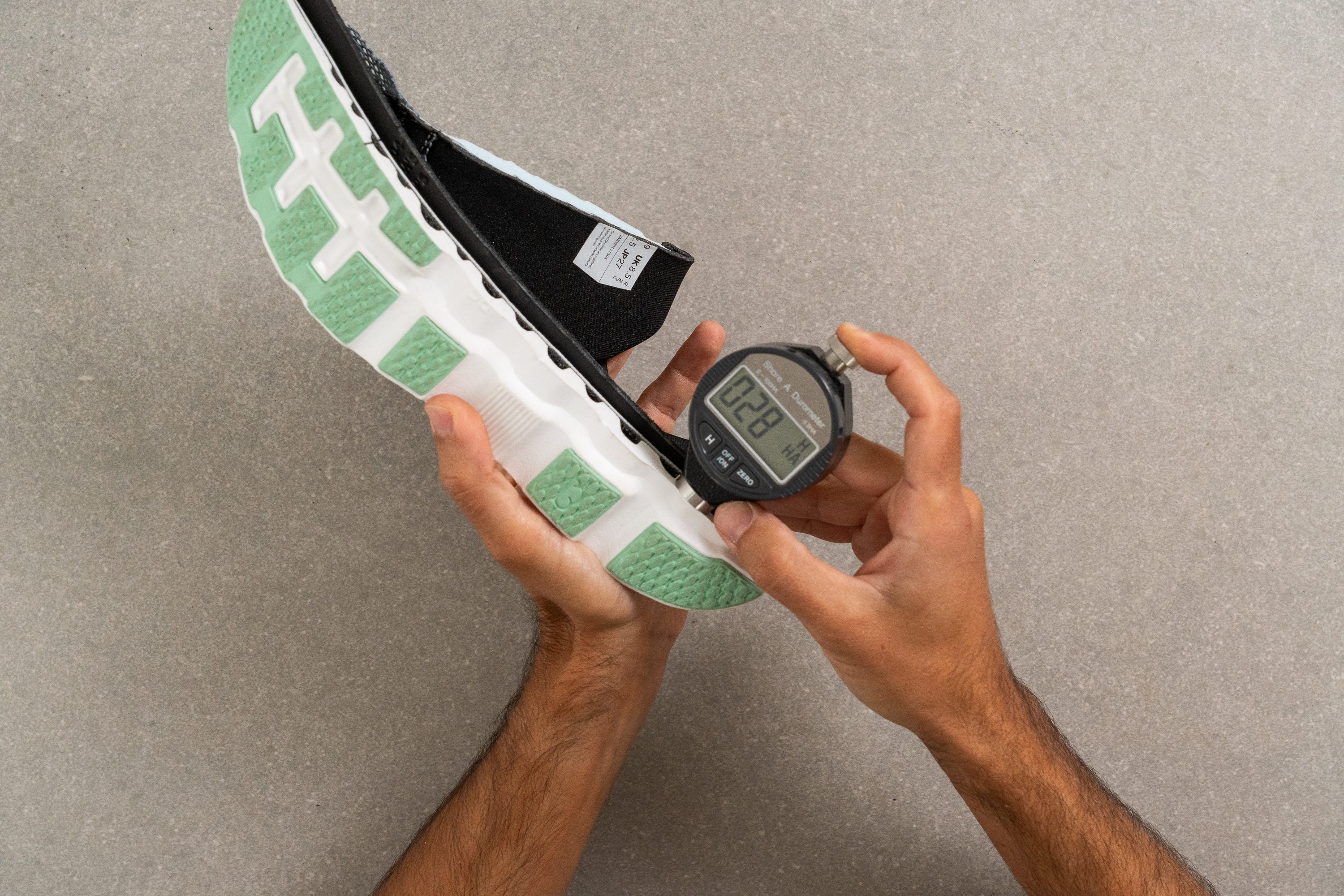
The trick here is that On’s midsoles don’t solely rely on the softness of their foams to provide good impact dampening. The configuration of the voids that make up the midsole “clouds” also plays an important part.
As we can see, each void allows the midsole to compress further to varying degrees; with the large ones at the heel being the most dramatic. The firmness of the foam allows these sections to snap back into shape, thus giving the shoe a ride that feels balanced and energetic.
For runners who prefer a softer sensation from their midsole, we recommend the Hoka Clifton 9 instead or the truly cloud-like On Cloudsurfer 7.
| Cloudstratus 3 | 27.6 HA |
| Average | 20.4 HA |
Size and fit
Size
On Cloudstratus 3 fits true to size (19 votes).
Width / Fit
Using our caliper, we found the Cloudstratus 3’s fit to be roomier than average, measuring 98.1 mm at its widest point.
This gives us plenty of space within the shoe, even towards the end of longer runs when our feet tend to swell and get sore.
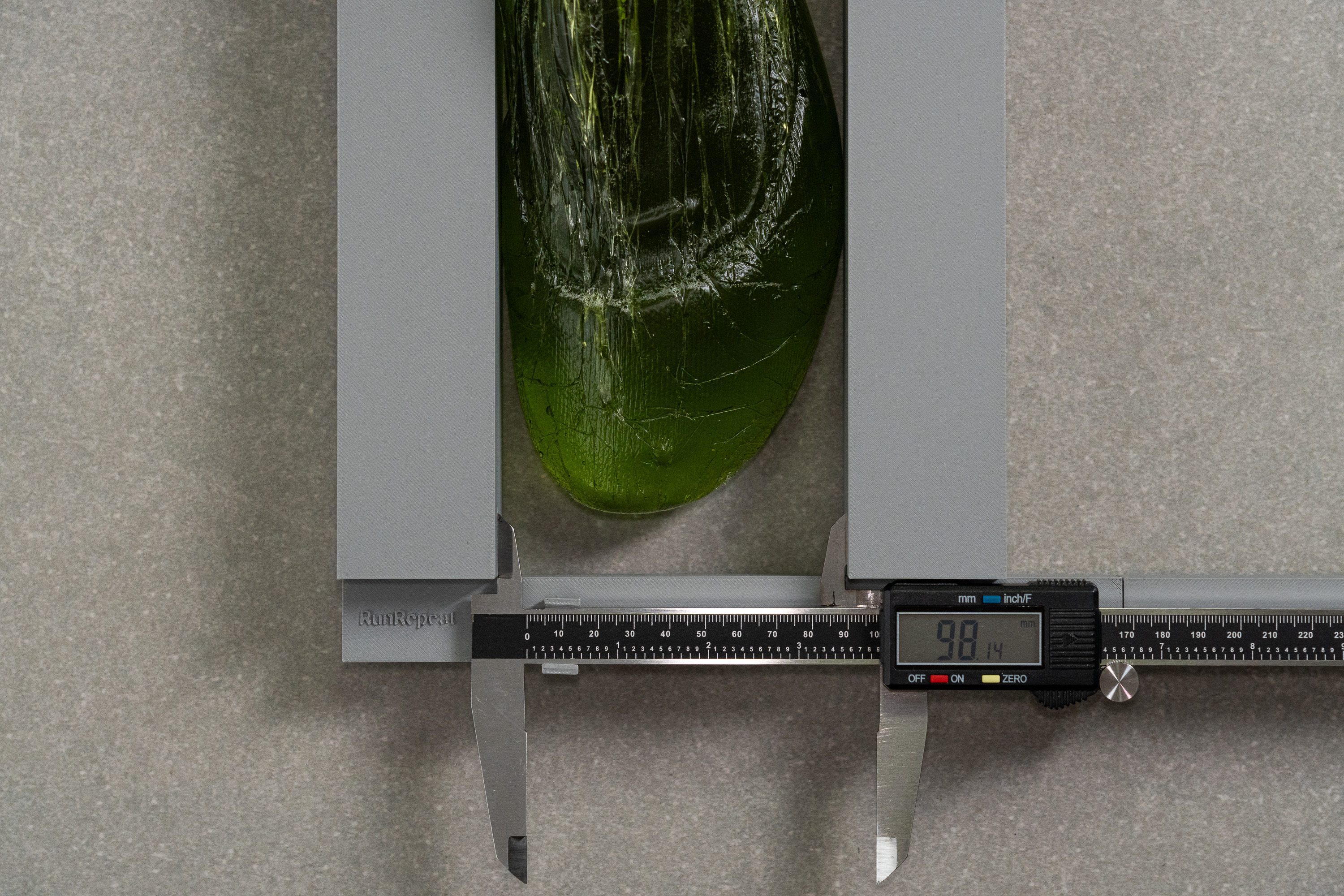
| Cloudstratus 3 | 98.1 mm |
| Average | 95.1 mm |
Toebox width
According to our findings, the Cloudstratus 3 has a moderately tapered toebox that measures 73.8 mm. While the midfoot provides a secure and well-supported fit, the front opens slightly, delivering a balanced and comfortably accommodating design.
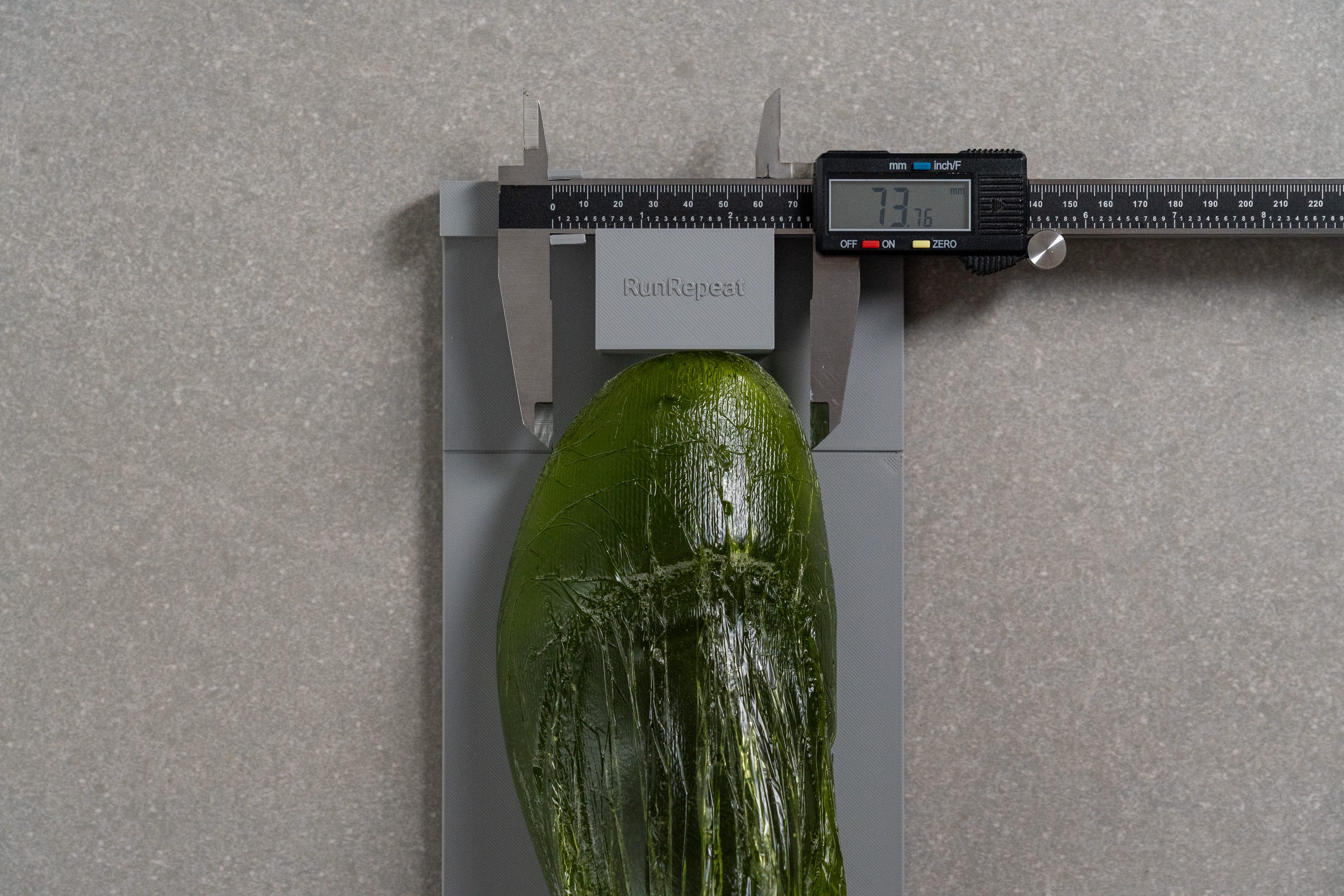
| Cloudstratus 3 | 73.8 mm |
| Average | 73.2 mm |
Toebox height
The Cloudstratus 3 offers an average height in the toebox, measuring 27.1 mm—perfectly aligned with the industry standard.
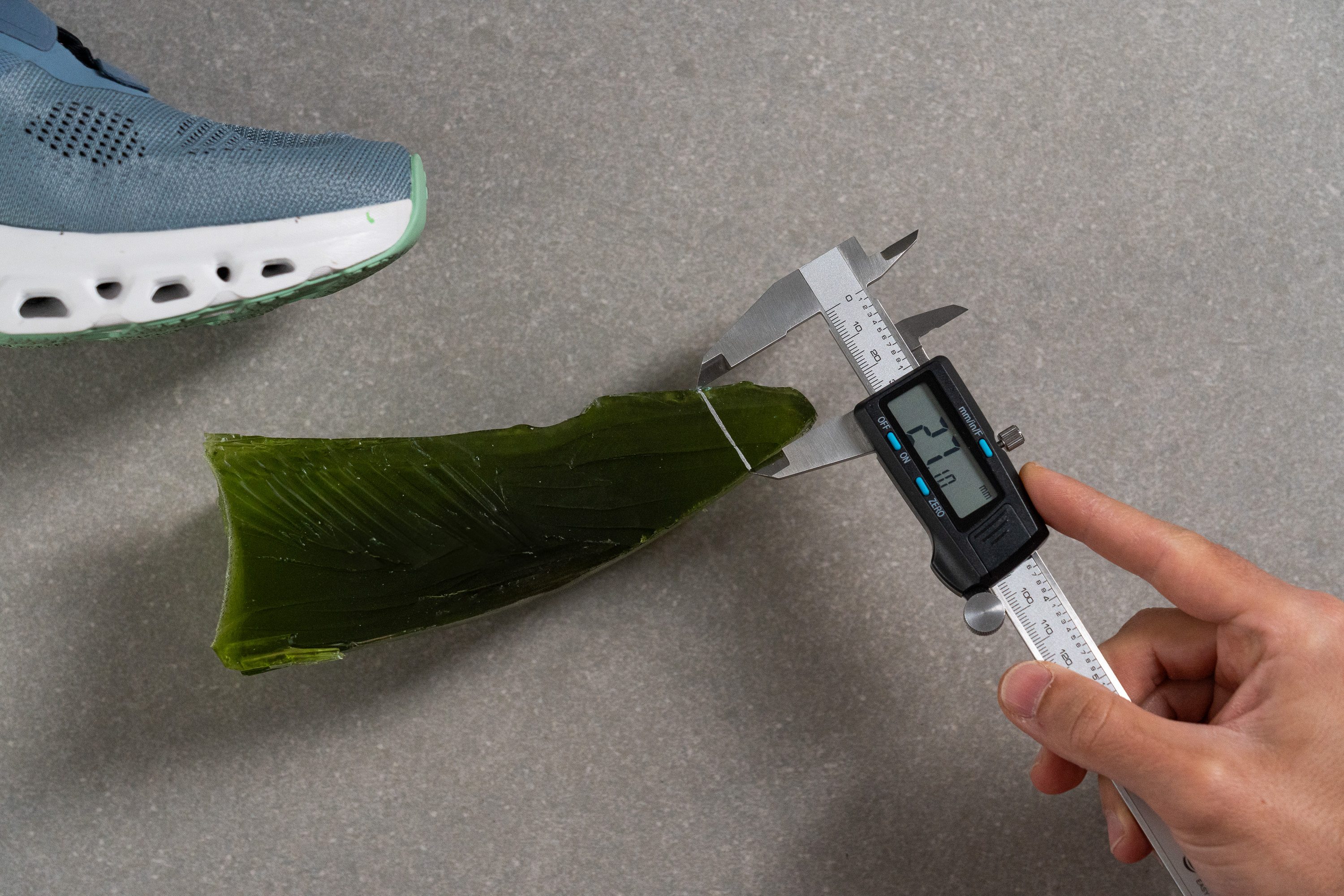
| Cloudstratus 3 | 27.1 mm |
| Average | 27.1 mm |
Traction / Grip
Traction test
We tested the outsole and found that it performed consistently well on both soaked asphalt and sunbaked pavement. The lab confirmed this with a 0.45 result in our wet test—respectable for an everyday trainer.
| Cloudstratus 3 | 0.45 |
| Average | 0.48 |
Outsole design
Rubber pods are placed directly over the CloudTec elements and split by deep, flex grooves. A wide central channel runs through the midfoot area, supporting natural foot motion and torsional flexibility. Coverage is only partial, with rubber applied only in high-impact zones, yet it appears sufficient for daily runs.

Flexibility / Stiffness
It took just 17.6N of force to bend the Cloudstratus 3 to 30 degrees, placing it slightly above average in stiffness. This added resistance likely stems from the presence of the embedded Speedboard plate running through the midsole.
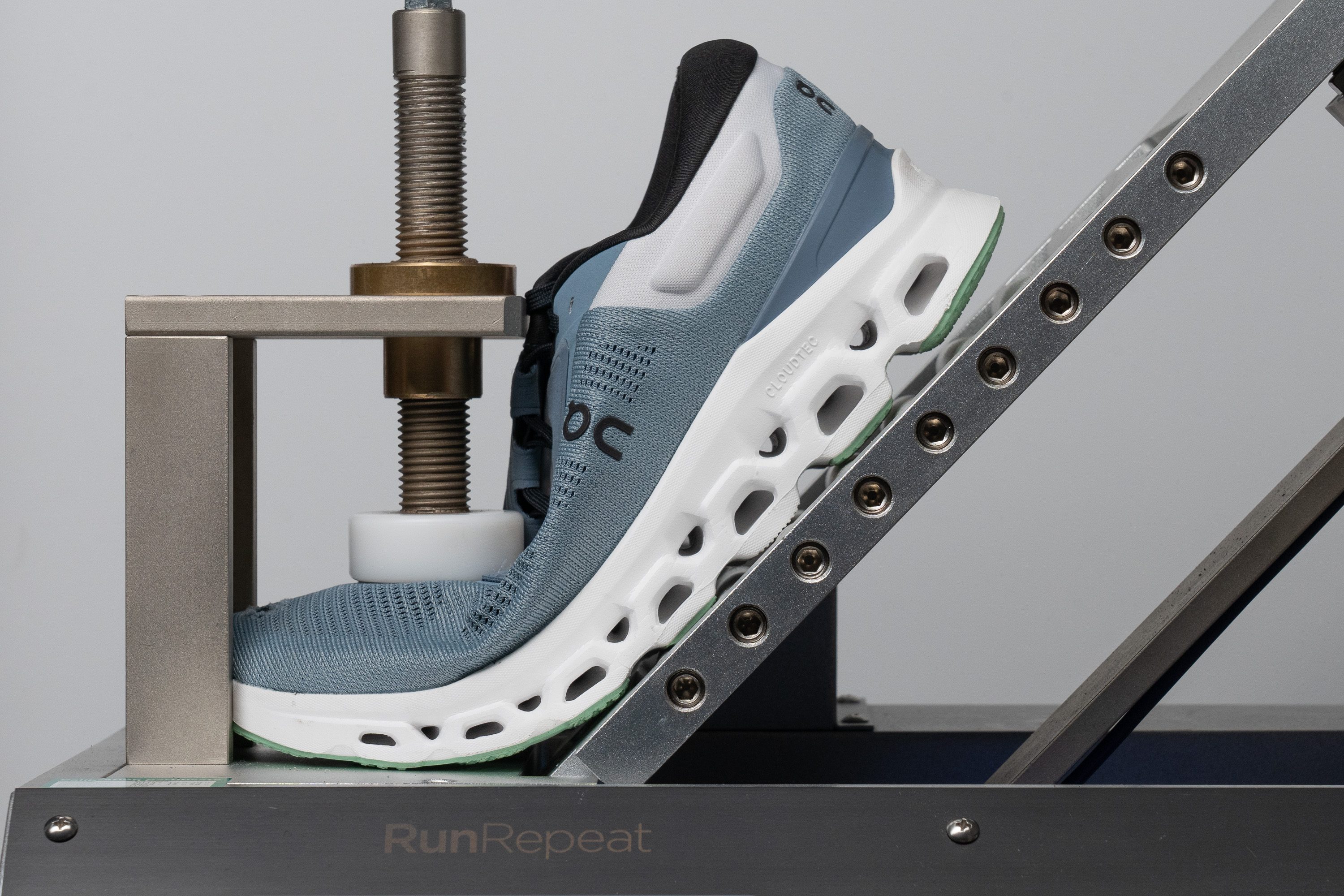
| Cloudstratus 3 | 17.6N |
| Average | 15.3N |
Stiffness in cold (%)
We also repeated our flex test after leaving the Cloudstratus 3 in the freezer for twenty minutes, this time getting a result of 36.2 N, which is more flexible than the average shoe under similar conditions. This means that the shoe should still feel comfortable and forgiving underfoot during even the harshest and most frigid winter runs.
We expect shoes to lose some flexibility when exposed to cold conditions, and stiffening up by 44.2 % puts the Cloudstratus 3 right on par with our current lab average. Therefore, the flexibility of the Cloudstratus 3 is about as consistent as the average road shoe between warm and cold conditions.
| Cloudstratus 3 | 44% |
| Average | 33% |
Weight
Which brings us to the weigh in. At 10.45 Oz, the Cloudstratus 3 is slightly heavier than the average road shoe.
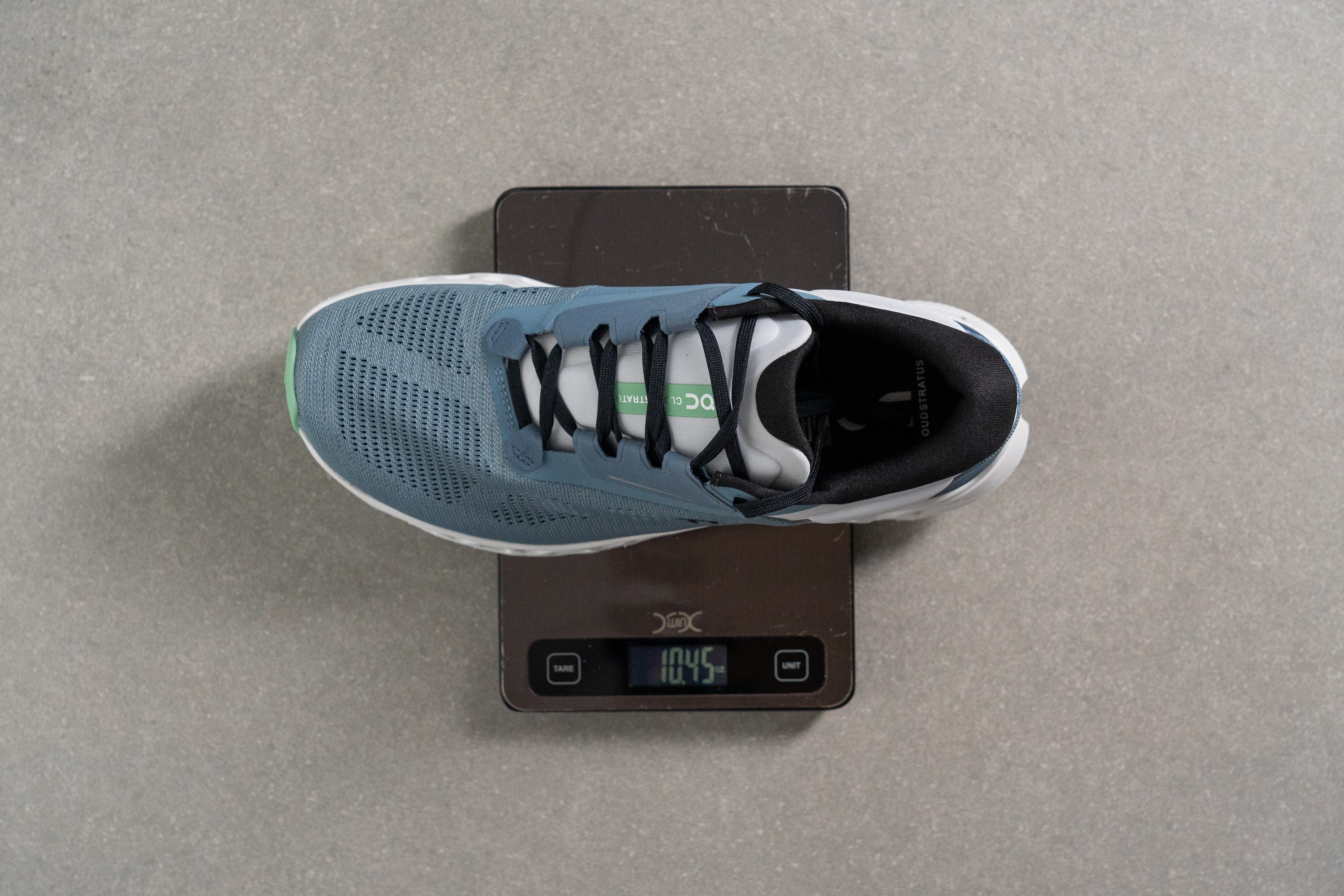
However, the responsive speedboard and subtle rocker geometry help give the Cloudstratus 3 a propulsive ride that makes the shoe feel lighter underfoot than the scale suggests. This allowed us to comfortably cover long distances without feeling burdened by the shoe during our tests.
| Cloudstratus 3 | 10.4 oz (296g) |
| Average | 9.3 oz (264g) |
Breathability
We put the Cloudstratus 3 through our state-of-the-art smoke test in order to test the shoe’s breathability. While the video demonstrates that it did very well, quickly allowing smoke to vent rather easily throughout the shoe, it’s not the best performance we’ve seen so far; thus earning the Cloudstratus 3 a breathability score of 4 out of 5. This means that the Cloudstratus 3 should be airy enough to comfortably facilitate warmer summer runs.
To shed light on this, both figuratively and literally, we inspected a backlit cross section of the Cloudstratus 3’s upper. As we can clearly see; the light shines easily through the many perforations in the tongue and toebox while the more reinforced sections down the lateral side completely block it out.
Our microscope provides us with further answers regarding the shoe’s breathability. While the upper is engineered to be quite porous, especially around the perforated sections, the fibers that make up the mesh are quite dense and tightly woven throughout the rest of the shoe. This means that the perforations provide the bulk of airflow, while the material itself keeps the shoe rather well insulated.
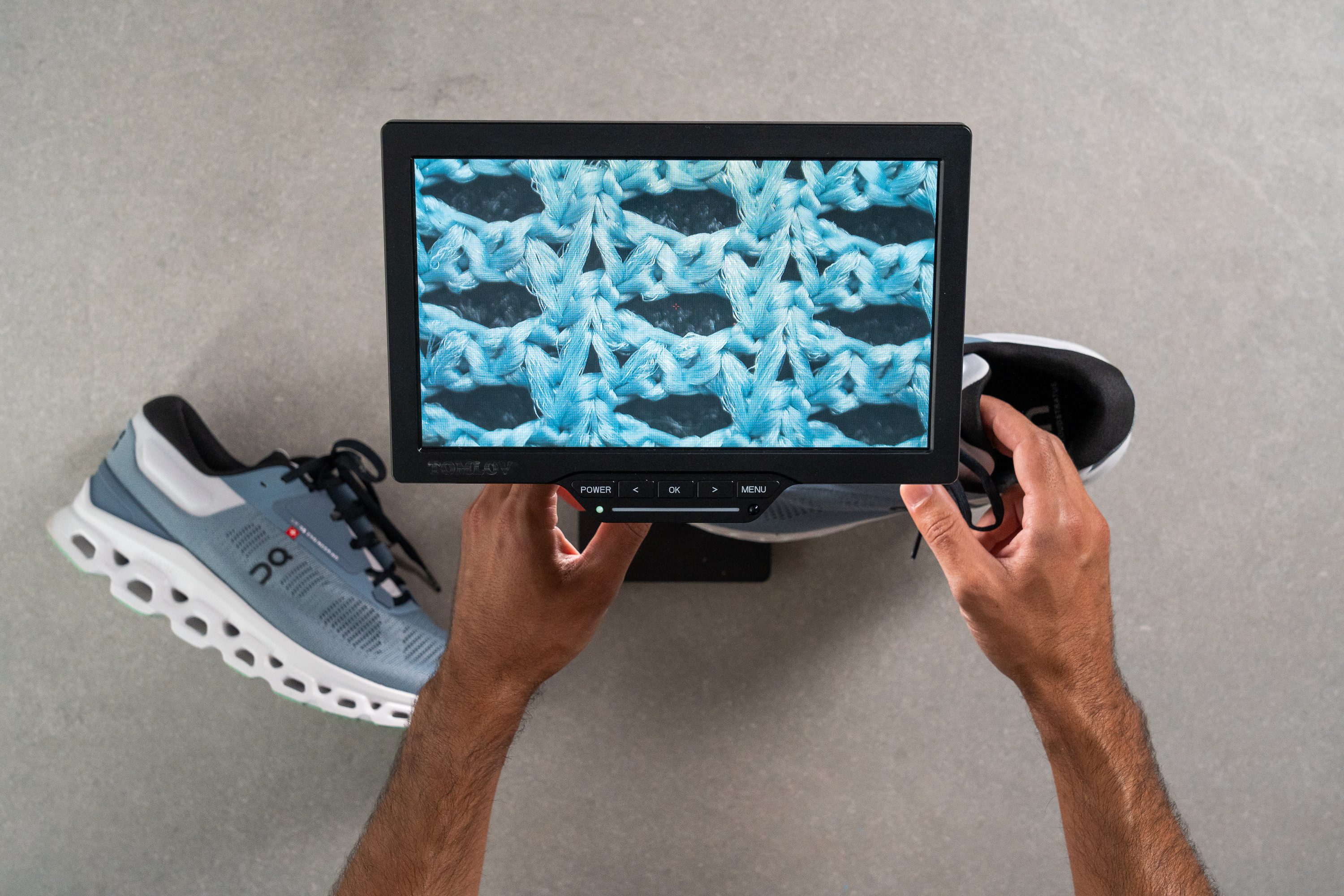
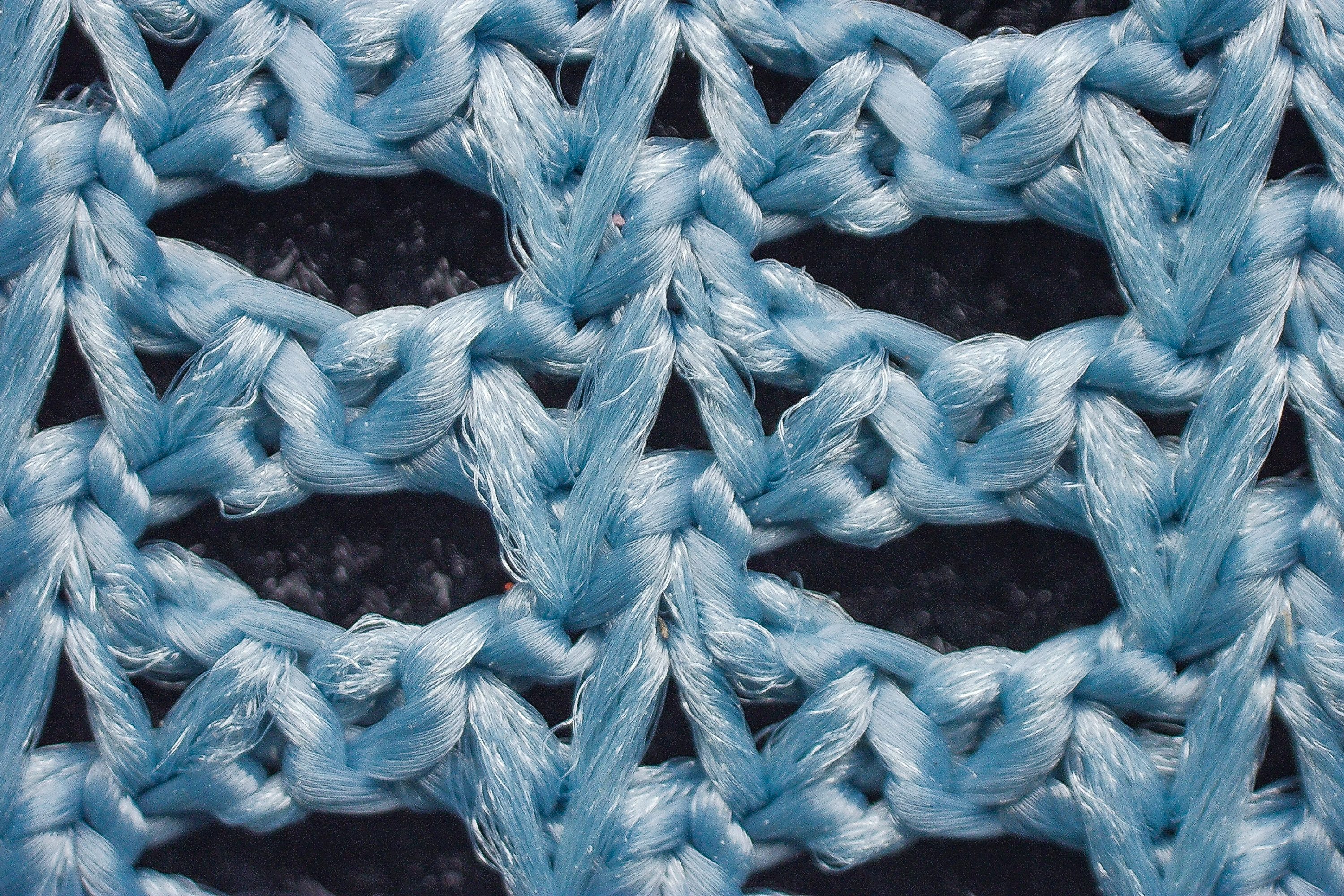
| Cloudstratus 3 | 4 |
| Average | 3.7 |
Stability
Lateral stability test
The Cloudstratus 3 feels quite well-planted as we shift our weight from side to side in the shoe, but there is a bit of a rolling sensation as we reach the end of our range of motion. This isn’t unusual for a neutral shoe, and the Cloudstratus 3 should still be stable enough even for those with mildly pronating strides.
Runners with pronounced pronation in their strides, however, should definitely consider a shoe with added stability features like Hoka Arahi 6 or the ASICS Kayano 30.
Torsional rigidity
To get an idea of the shoe’s torsional rigidity, we bent and twisted the Cloudstratus 3 in our hands and were faced with quite a bit of resistance in the process. This slightly stiffer than average performance leads us to give the shoe a score of 4 out of 5 on our subjective scale.
This is definitely a result of the rigid speedboard embedded in the Cloudstratus 3’s midsole, which imparts a sense of stability underfoot by minimizing the amount our foot is able to contort or roll within the shoe; leaving us with a firm and level landing surface to spring off from.
| Cloudstratus 3 | 4 |
| Average | 3.5 |
Heel counter stiffness
The Cloudstratus 3’s heel counter didn’t put up nearly as much resistance to our manual manipulations. We therefore gave it a rather flexible score of 2 out of 5. This level of stiffness in the heel counter is good for a daily trainer as it secures the rearfoot in a way that doesn’t put much pressure on the Achilles and allows the ankle to move more naturally and comfortably.
| Cloudstratus 3 | 2 |
| Average | 2.9 |
Midsole width - forefoot
We measured the Cloudstratus 3’s midsole to be ever-so-slightly broader than our current lab average at 115.4 mm wide at the forefoot. This ensures that forefoot strikers have enough of a base to land on and spring off from, but without going too far and sacrificing weight or agility.
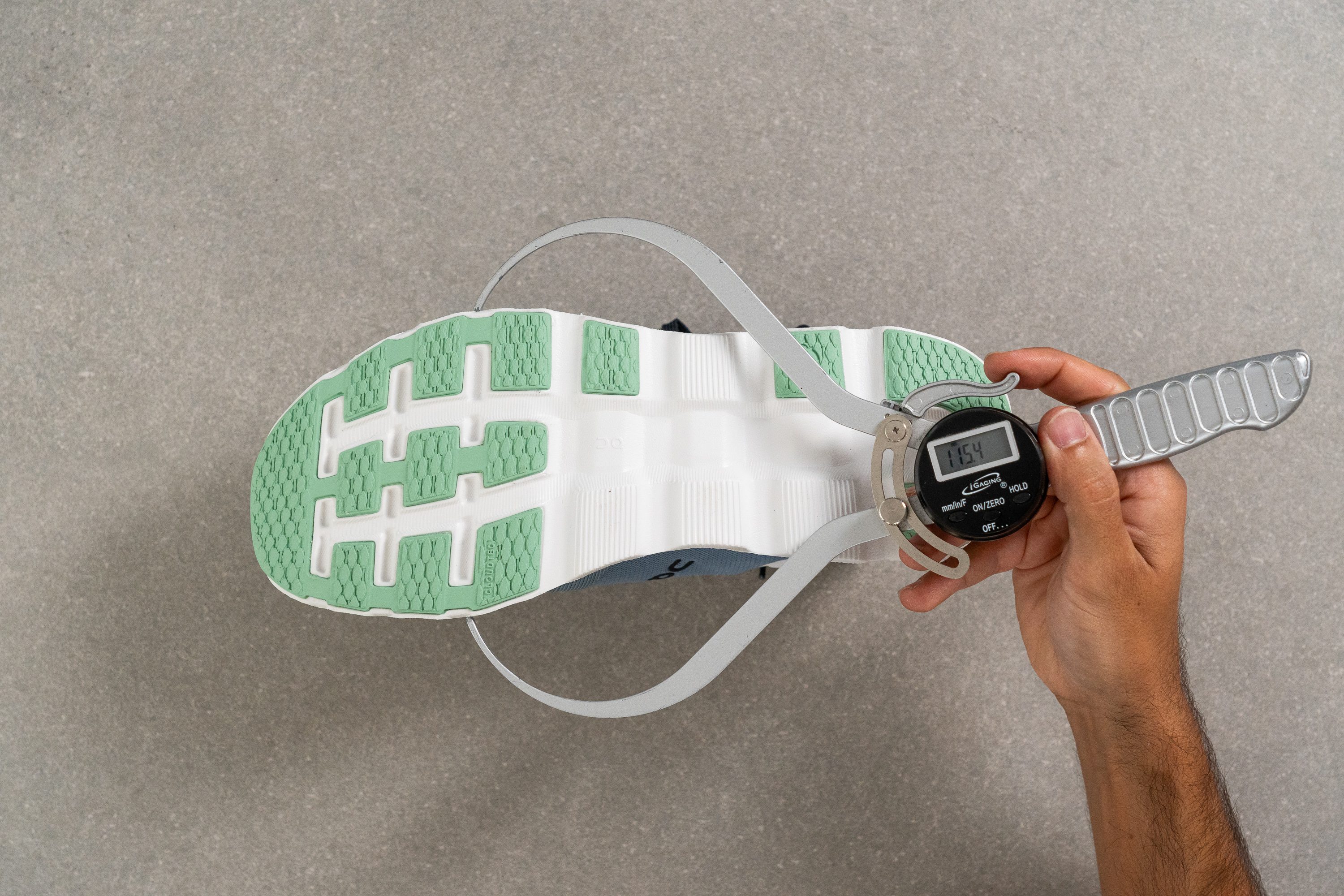
| Cloudstratus 3 | 115.4 mm |
| Average | 114.4 mm |
Midsole width - heel
At 90.3 mm wide at the heel, the Cloudstratus 3’s midsole is right on par with our current lab average. This means that heel strikers will also enjoy sure-footed landings in this shoe.
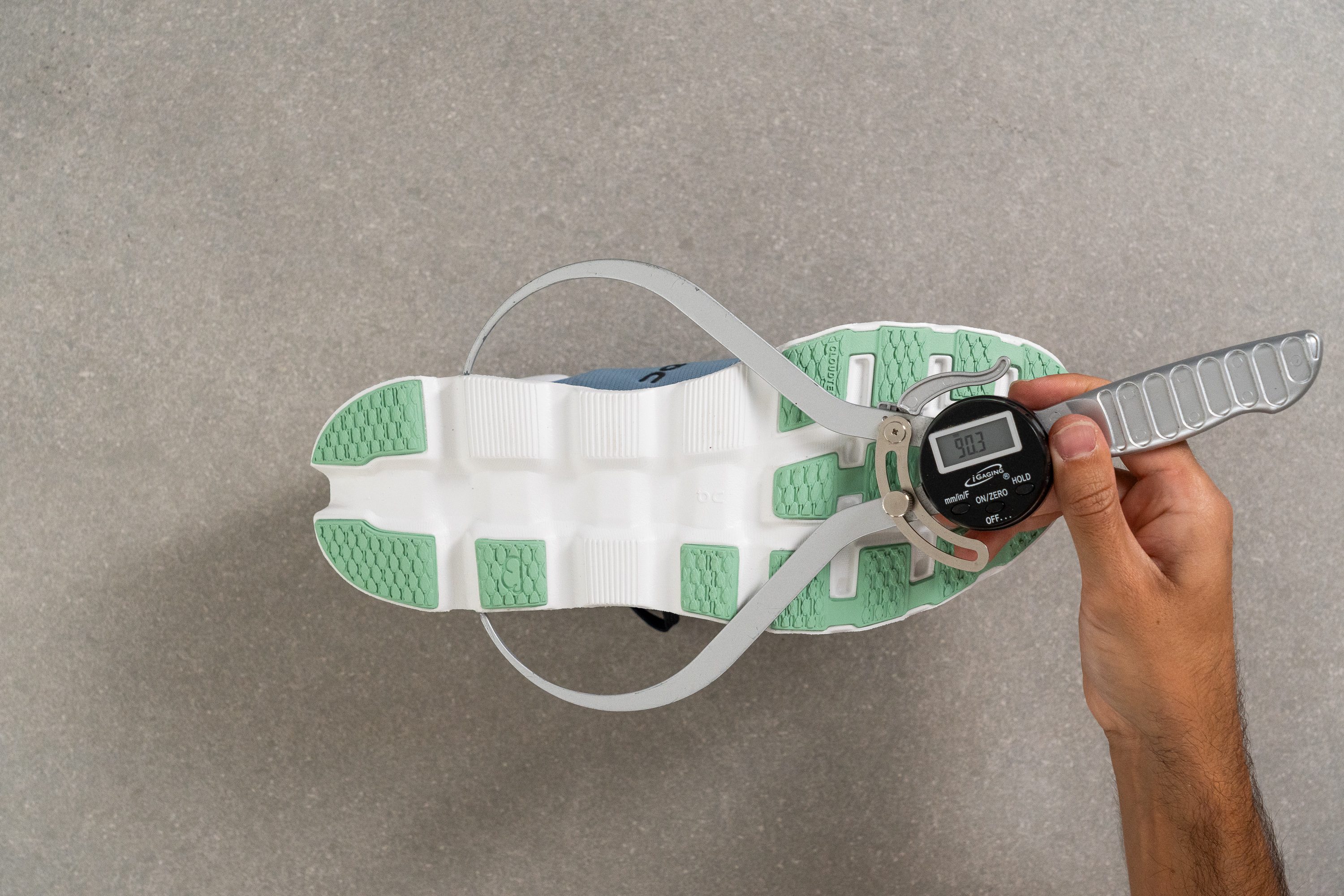
| Cloudstratus 3 | 90.3 mm |
| Average | 90.7 mm |
Durability
Toebox durability
We fired up our Dremel to see how tough the Cloudstratus 3’s 100% recycled polyester upper really is. Despite briefly snagging our tool’s grinding element towards the end of the test, the damage was clearly already done. Our merciless Dremel had blasted clean through the toebox.
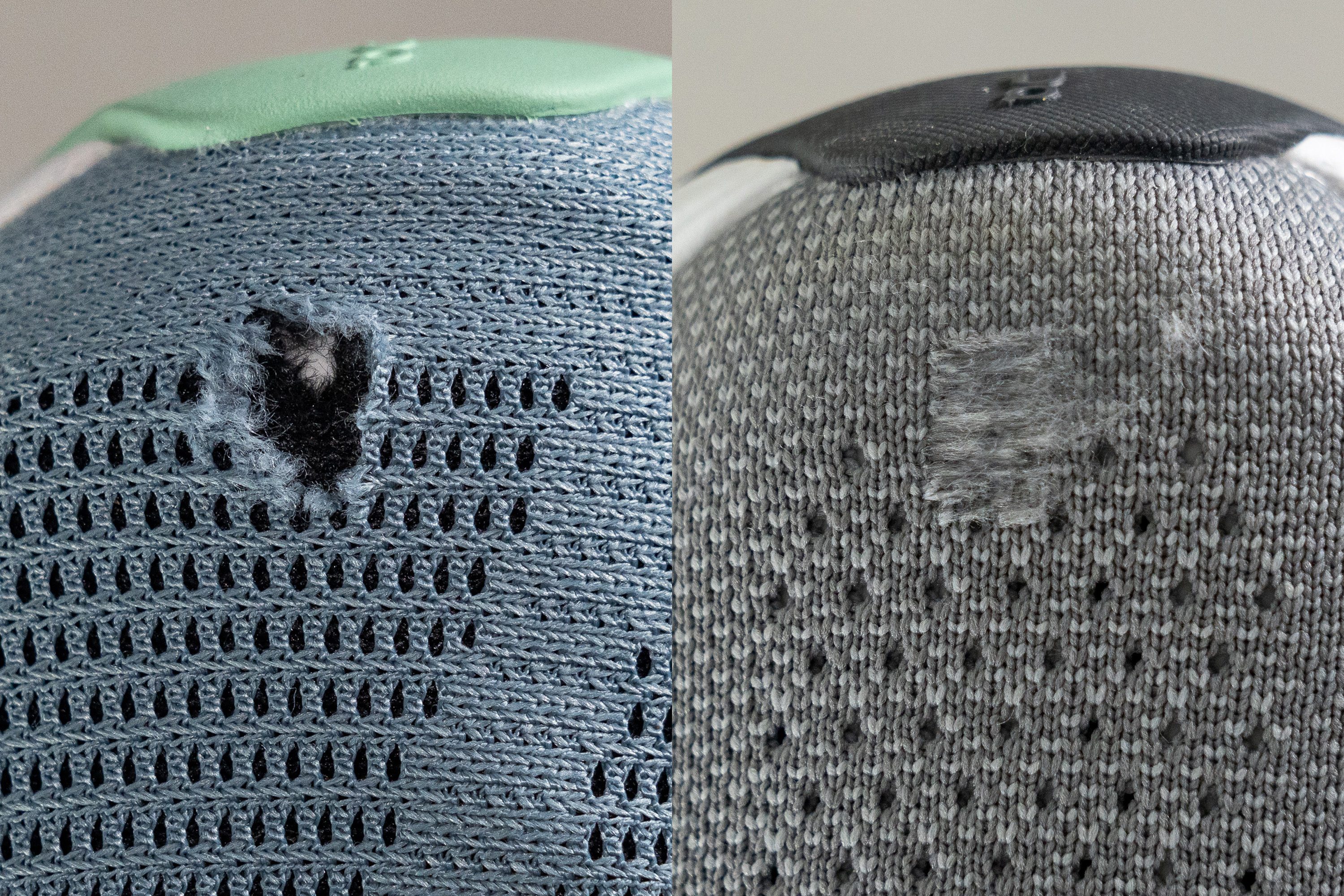
However, this isn’t the worst result we’ve seen in the lab so far, if that can be believed, so we gave the Cloudstratus 3 a 2 out of 5 for toebox durability.
| Cloudstratus 3 | 2 |
| Average | 2.6 |
Heel padding durability
We then turned our attention to the Cloudstratus 3’s heel counter. After applying our Dremel to it for four seconds at 5K RPM with a force of 3.2N; we found that we had barely scuffed the lining, with much of the padding intact beneath. As a result, we give the shoe a heel padding durability score of 4 out of 5.
This above average performance means that we shouldn’t have any issues with the heel collar wearing out prematurely, even for those who enjoy going sockless from time to time.
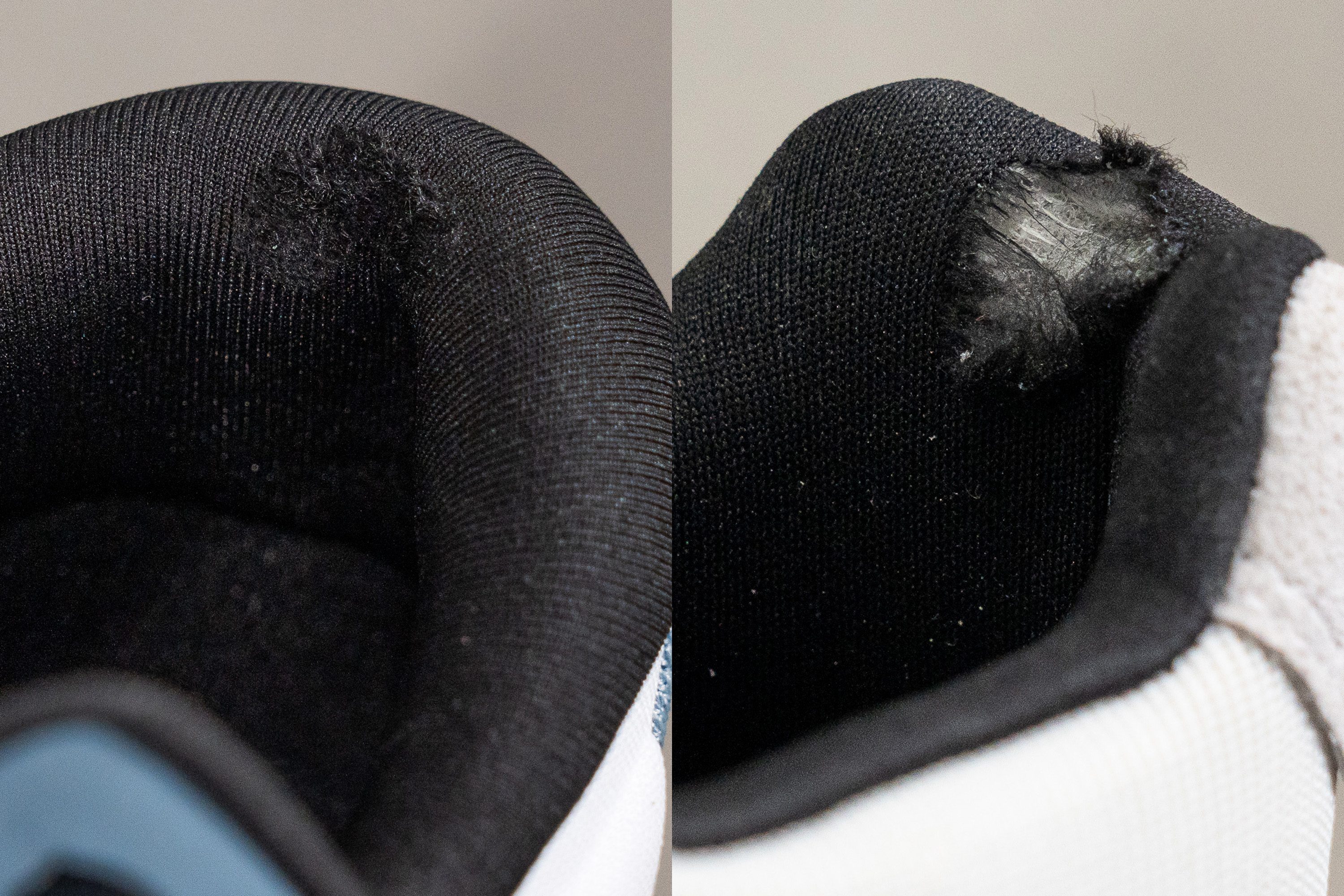
Compare that to how the On Cloudrift's much less durable heel counter fared in the same test.
| Cloudstratus 3 | 4 |
| Average | 3.4 |
Outsole durability
With bated breath we pressed the Dremel’s abrasive element, spinning at 10K RPM, onto a section of the outsole with a force of 3.2N. The twenty second test turned out rather anticlimactically, with very little material seemingly lopped off the shoe.
This is confirmed by our tire gauge, with which we measured a loss of only 0.64 mm of rubber from the outsole. This better than average performance leads us to confidently predict the shoe to last at least 500-miles, even with the occasional mild trail thrown into the mix.
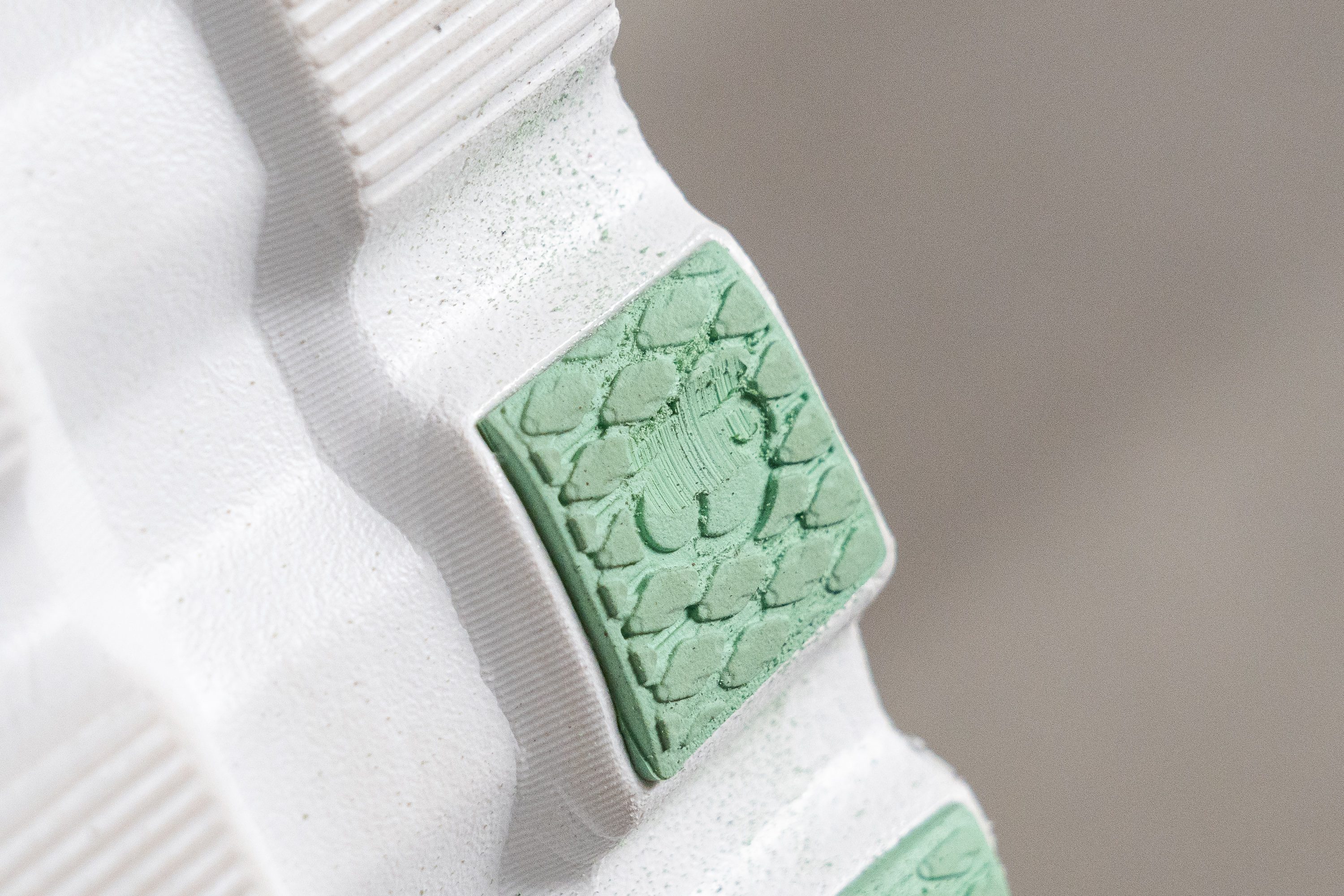
| Cloudstratus 3 | 0.7 mm |
| Average | 1.1 mm |
Outsole thickness
We measured the outsole with our caliper to be a rather meager 2.8 mm thick. While the shoe’s performance in our previous test inspires confidence, we’d be happier with a touch more rubber to improve the Cloudstratus 3’s longevity, especially considering how much exposed foam there is underfoot.
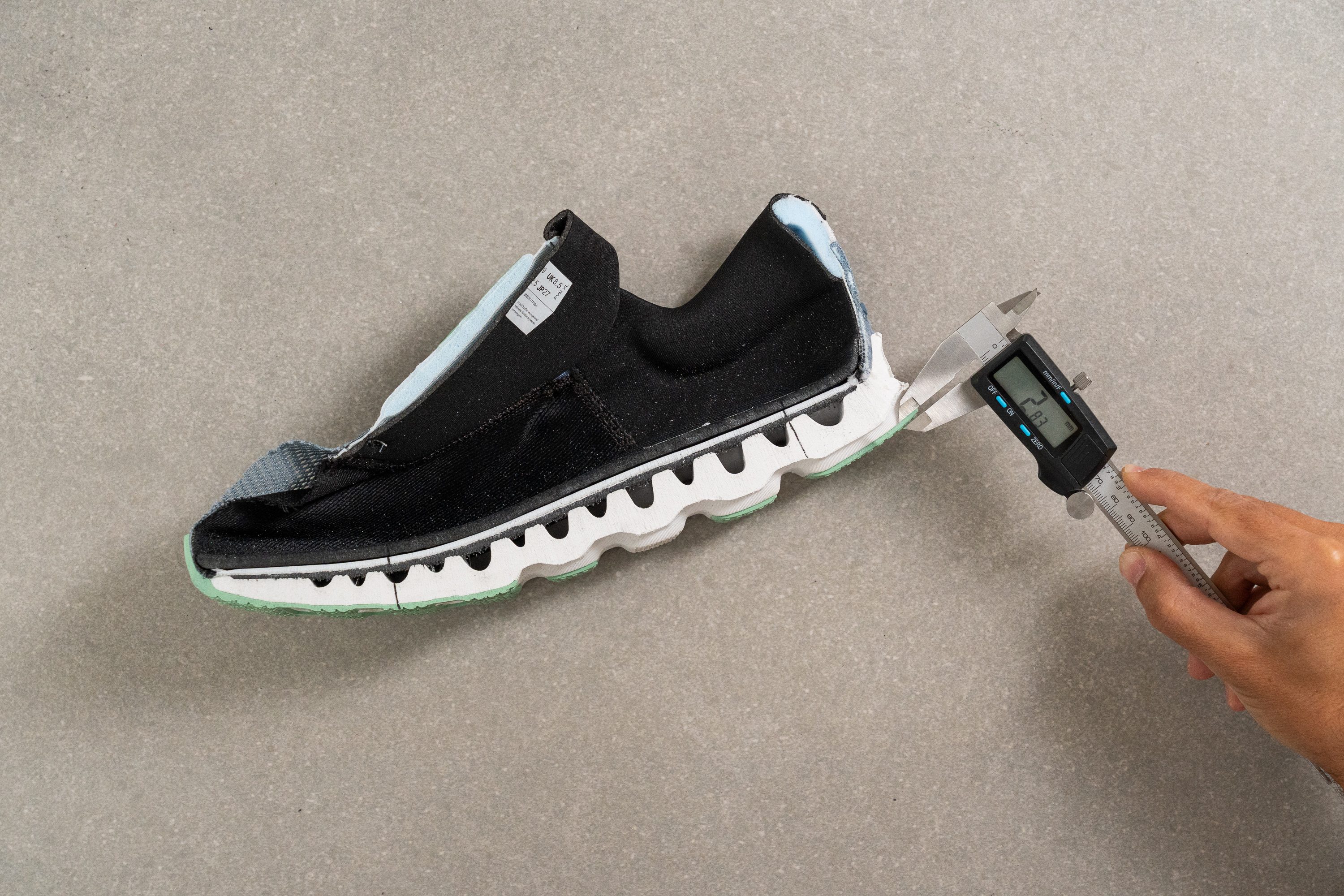
On the other hand, skimping on outsole material is an effective weight-saving measure, a trade-off that might have been necessary considering how plushly padded the shoe’s upper is.
| Cloudstratus 3 | 2.8 mm |
| Average | 3.2 mm |
Misc
Insole thickness
At 4.6 mm thick, the Cloudstratus 3’s insole is right on par with our current lab average. This gives us a landing surface that adequately complements the shoe’s midsole cushioning.
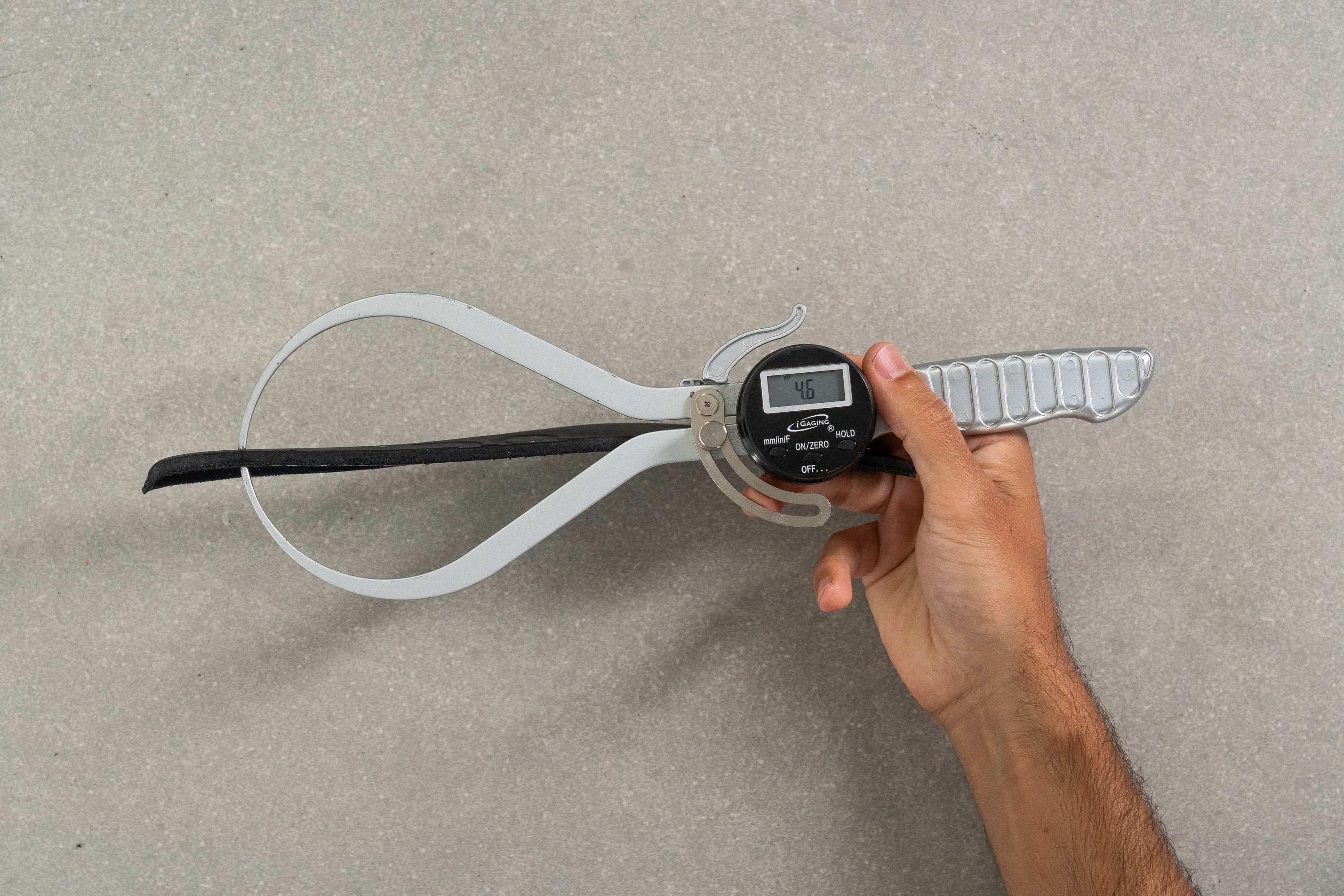
| Cloudstratus 3 | 4.6 mm |
| Average | 4.5 mm |
Removable insole
The Cloudstratus 3’s insole is fully removable, so runners in need of custom orthotics will be able to use them with this shoe where necessary.
| Cloudstratus 3 | Yes |
Midsole softness in cold (%)
We popped the Cloudstratus 3 in the freezer to test the effects of cold weather on the midsole. After twenty minutes, we got a durometer reading of 34.8 HA which, like the room temperature result, is firmer than the average road shoe.
While the shoe’s midsole becomes more firm than average in the cold, we have to point out that the Helion foam proves to be slightly more consistent than our current lab average; with a less than average differential of 26.1% between warm and cold conditions. This means that the shoe’s cushioning shouldn’t feel too different as the seasons change.
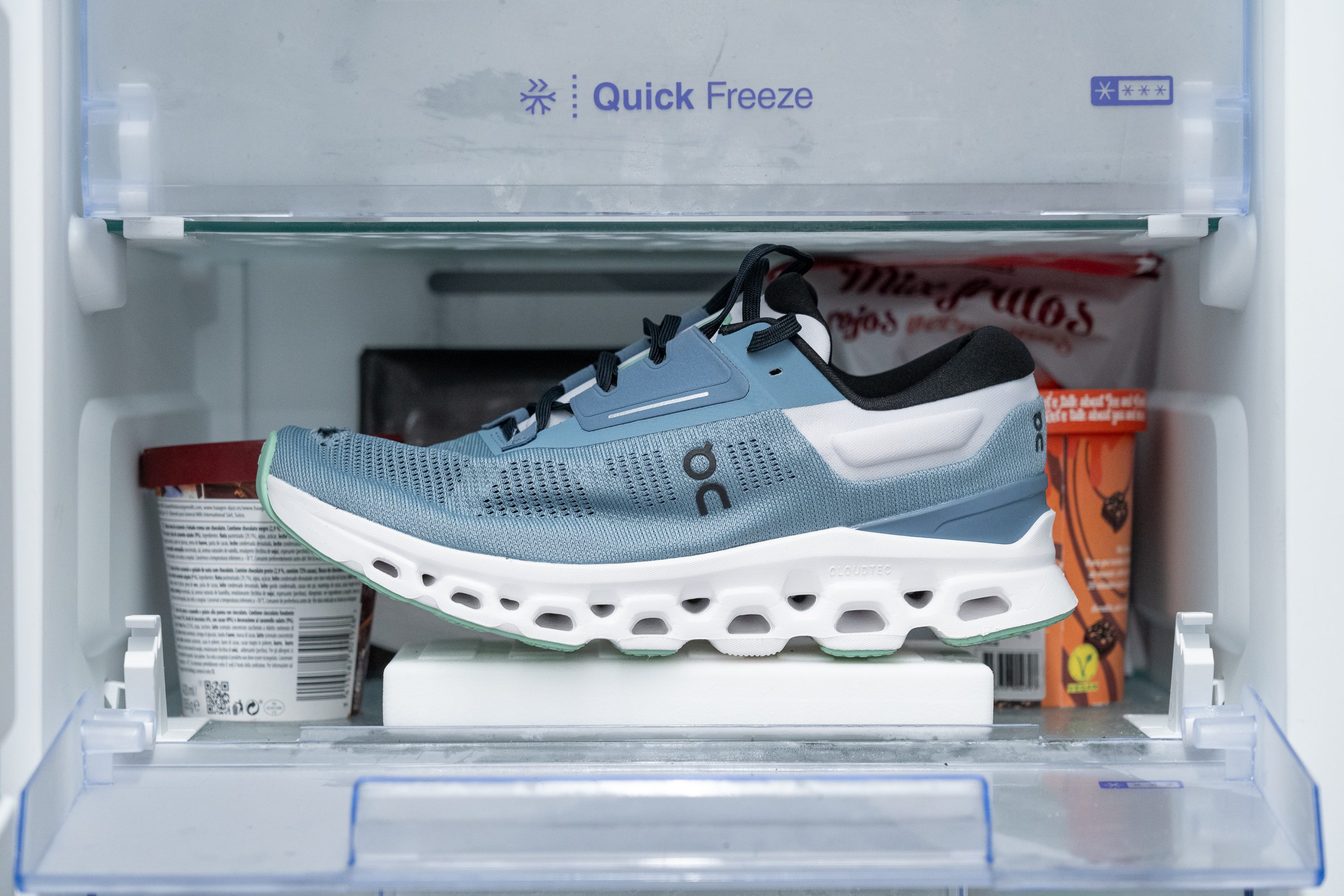
| Cloudstratus 3 | 26% |
| Average | 24% |
Reflective elements
With only a small reflective element (yes that’s singular) on the lateral side of each shoe, the Cloudstratus 3 doesn’t offer much in terms of nighttime visibility. We recommend sticking to well-lit routes or using additional reflective elements if going for a nocturnal run.
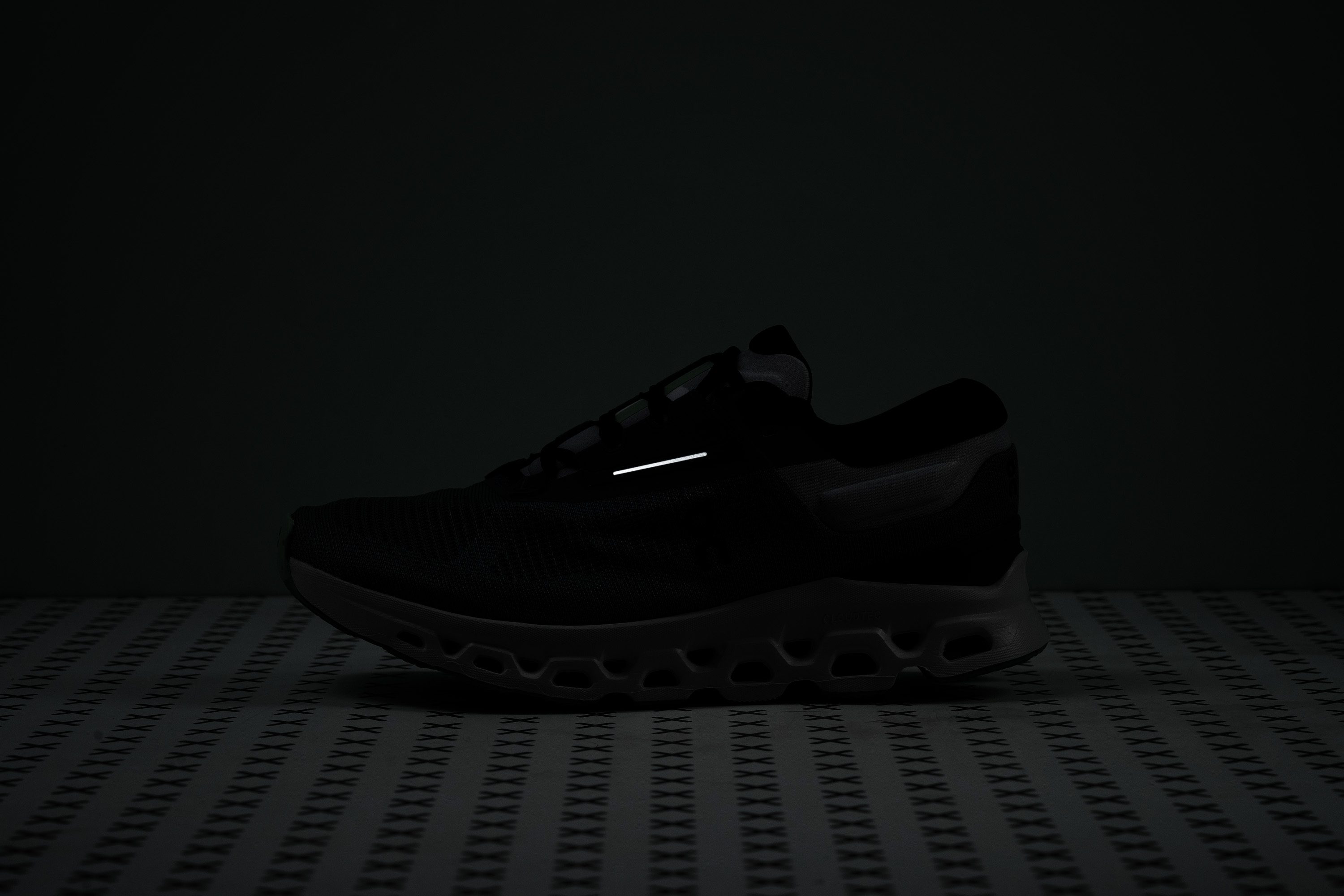
| Cloudstratus 3 | Yes |
Tongue padding
Sticking to the tongue, On continues in their quest of crafting comfortable uppers for daily trainers. Using our caliper we measured it to be a whopping 9.6 mm thick; considerably more padded than the average road shoe.
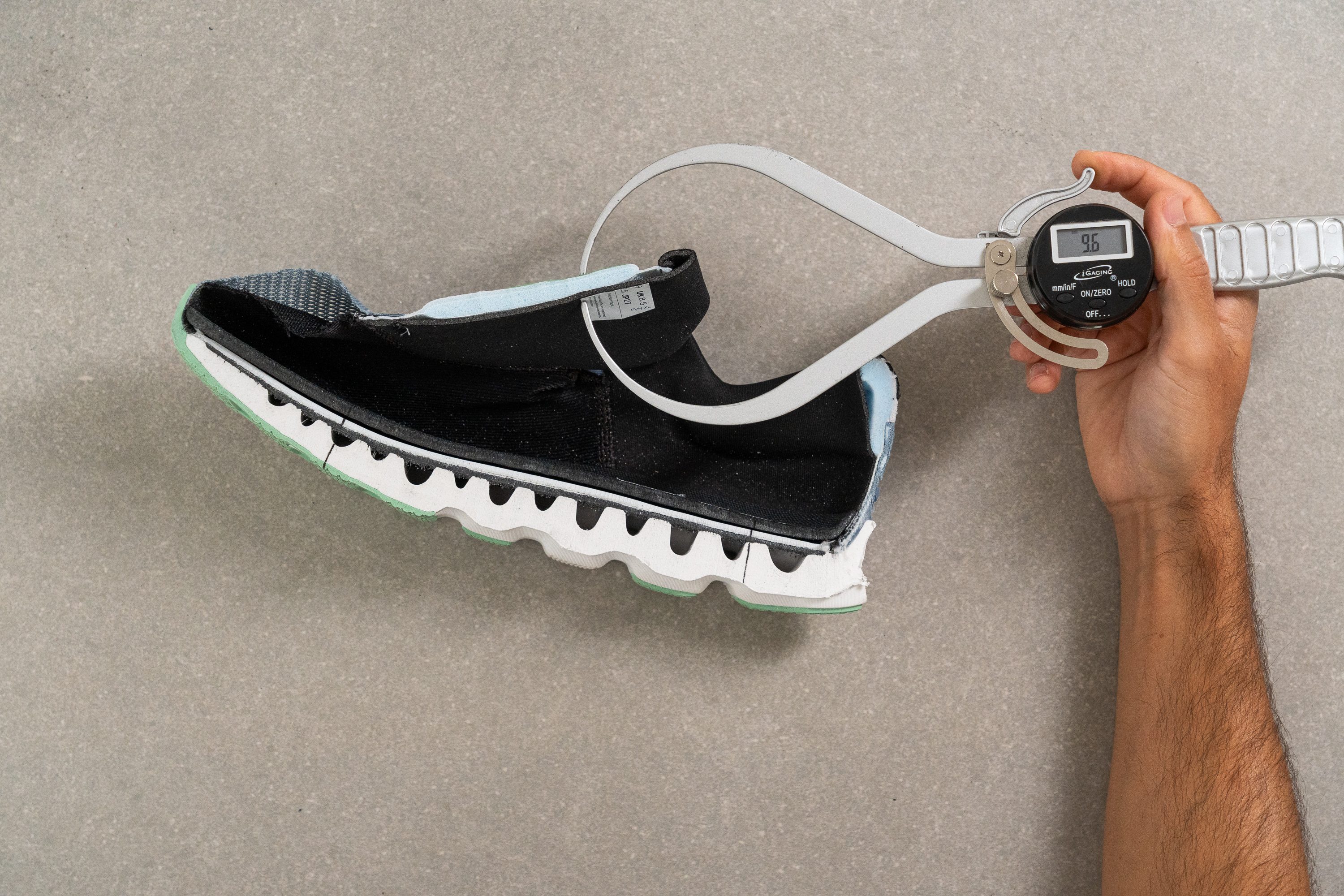
This gives us an incredibly luxurious and secure midfoot lockdown, with the laces seemingly disappearing into the padding no matter how tightly we laced up.
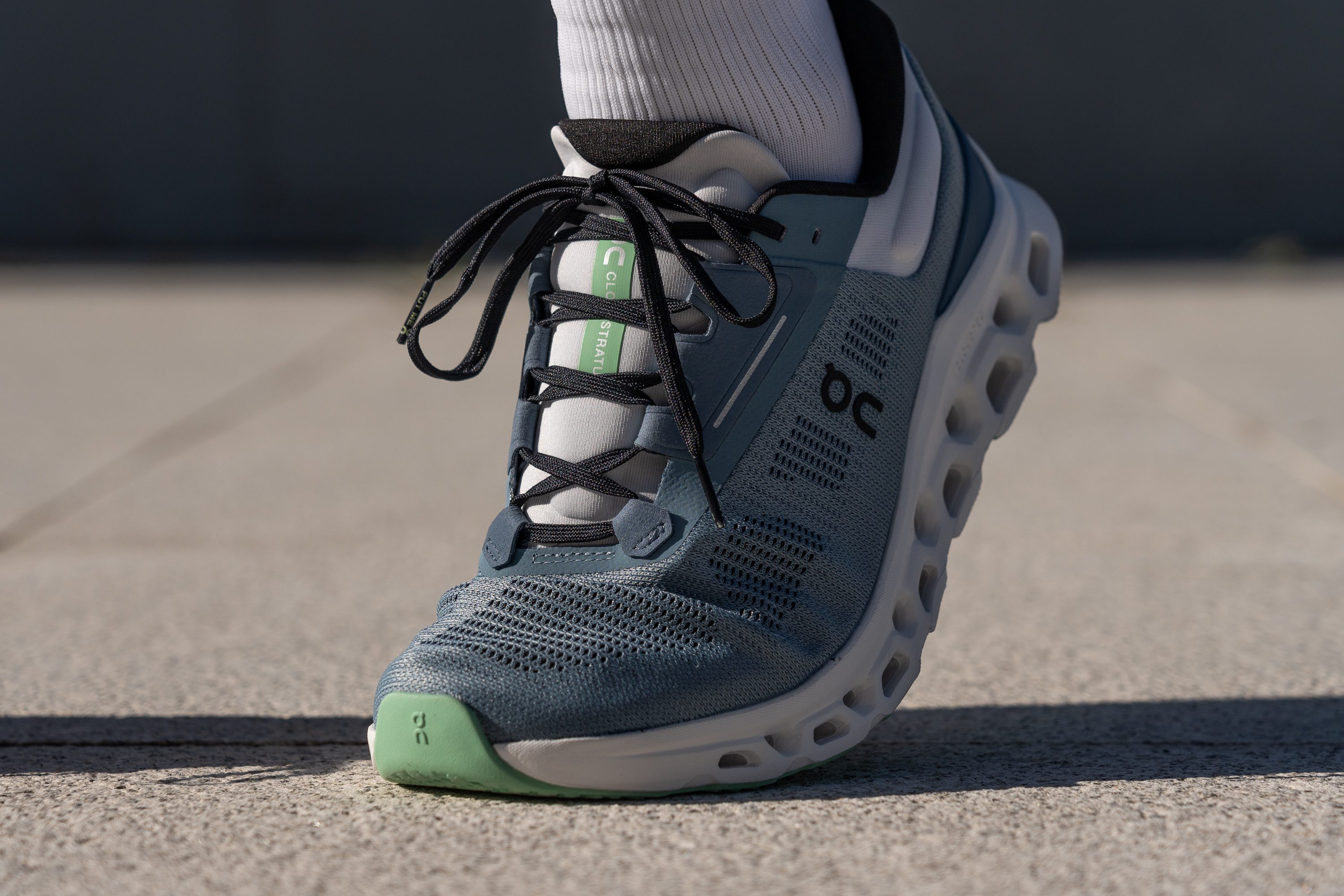
| Cloudstratus 3 | 9.6 mm |
| Average | 5.8 mm |
Tongue: gusset type
Continuing their trend of pleasing pirates; On has again opted for a bootie-style gusset that runs up most of the length of the Cloudstratus 3’s tongue, securing it snugly and comfortably over the instep. It also helps in preventing debris from finding its way into the shoe if mild trails are in the cards.
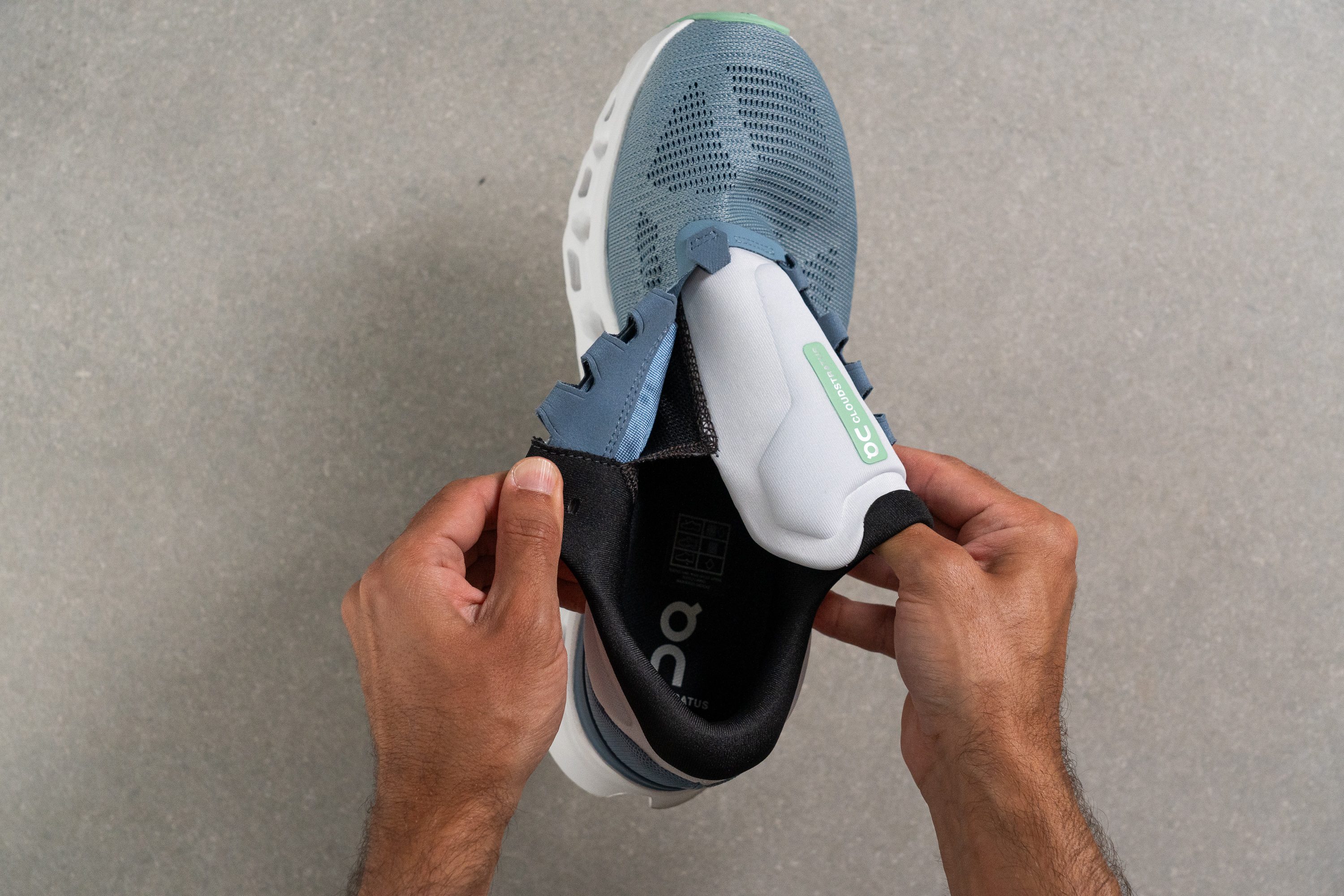
| Cloudstratus 3 | Bootie |

